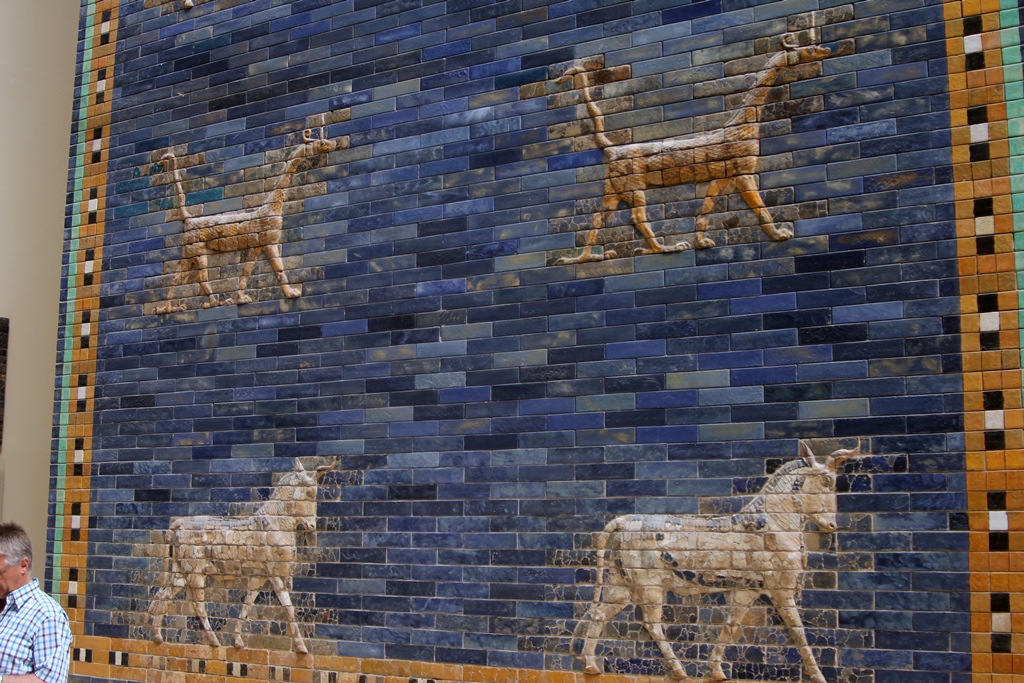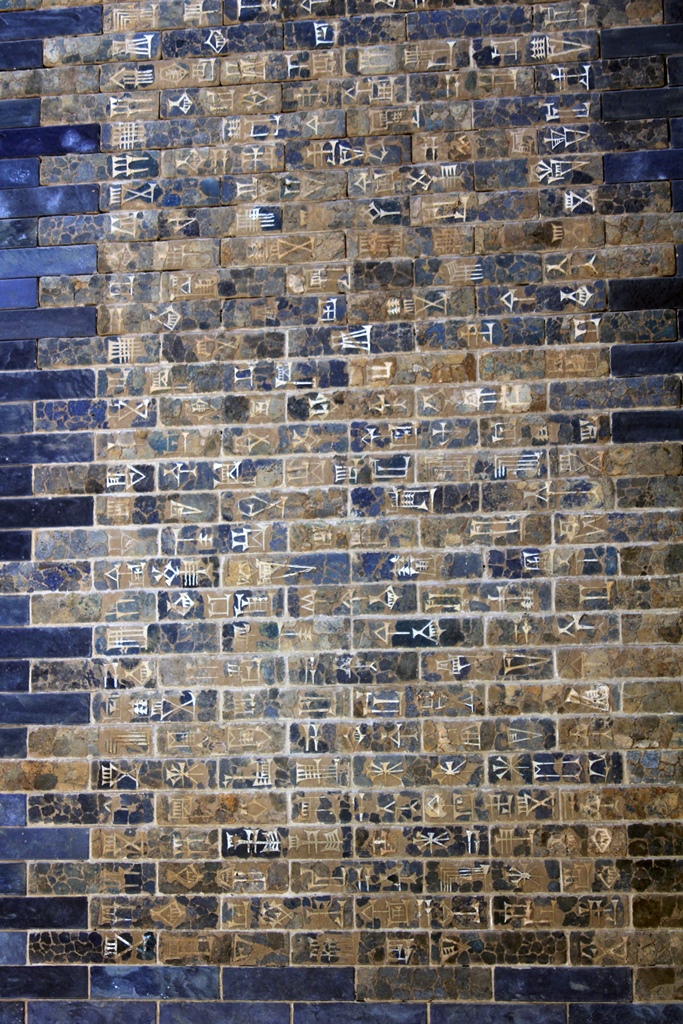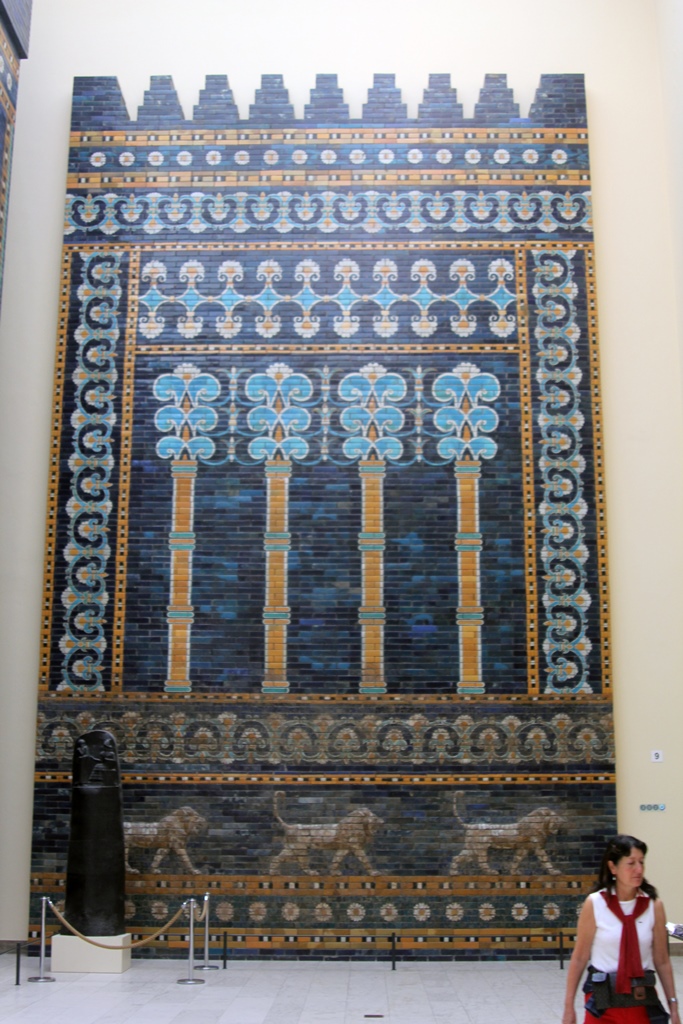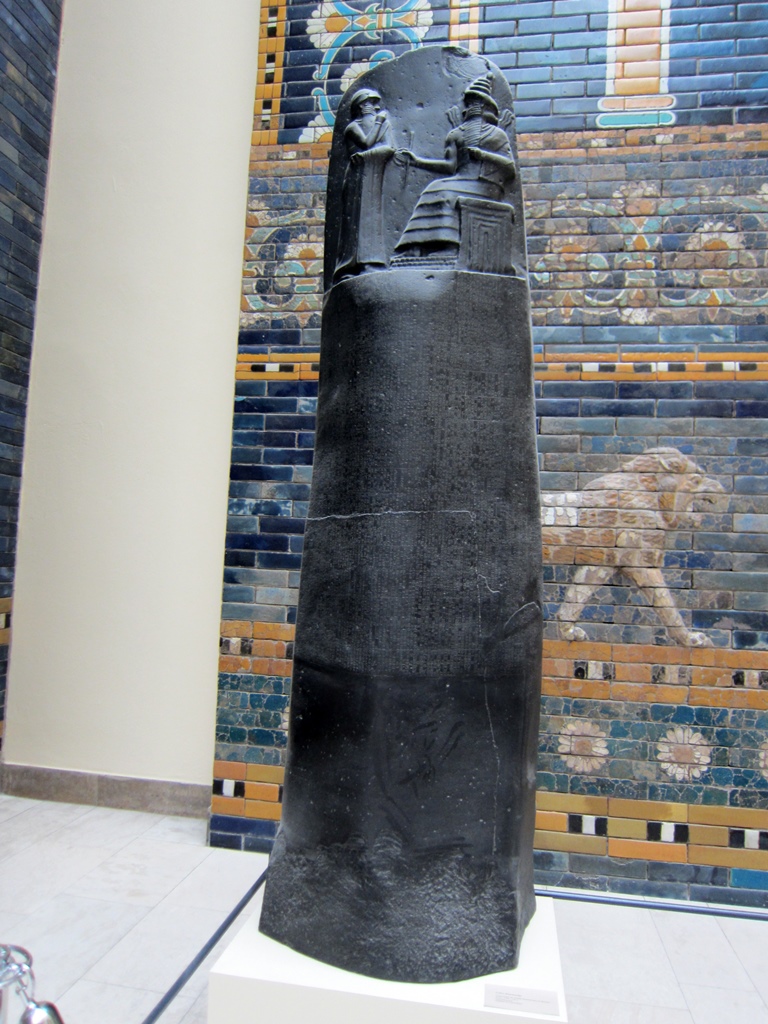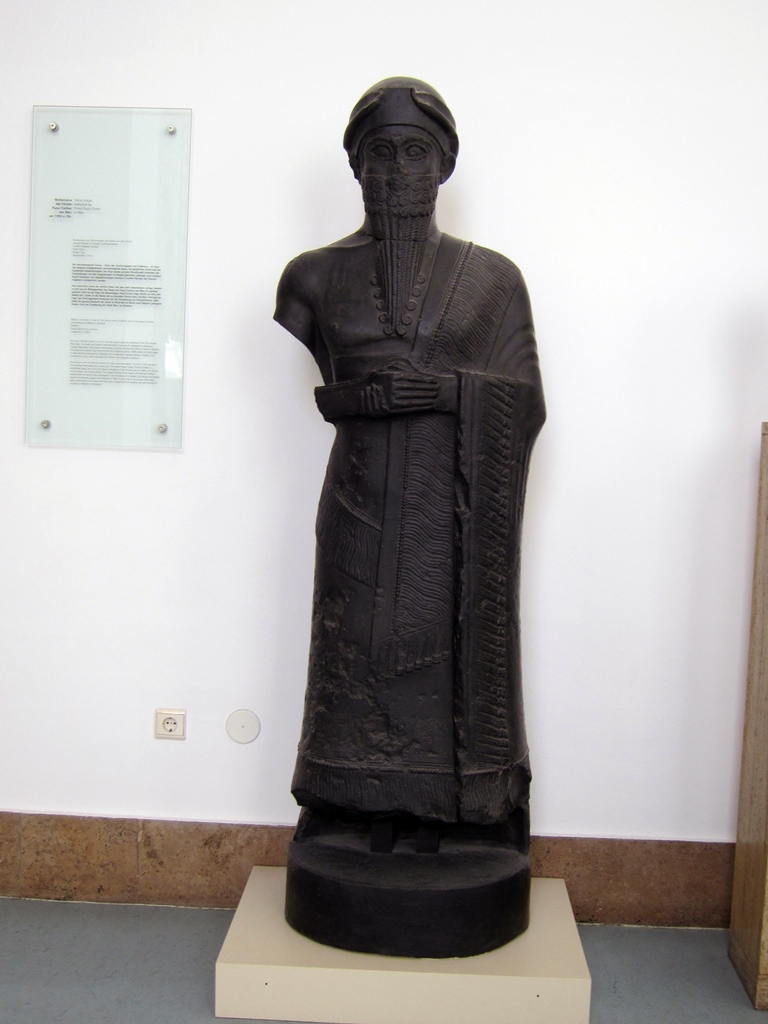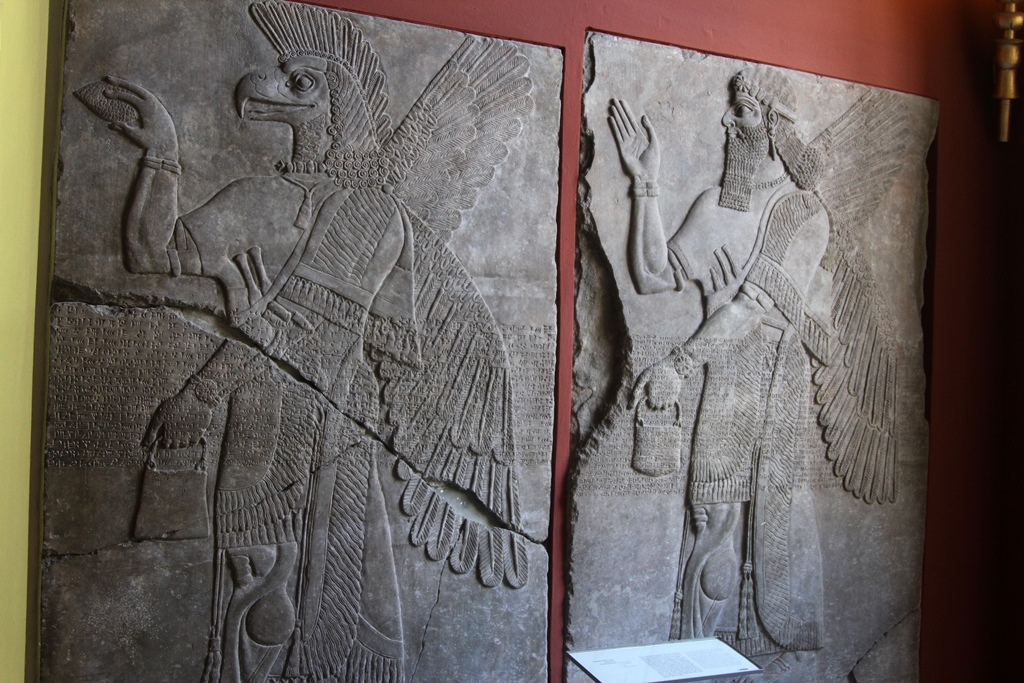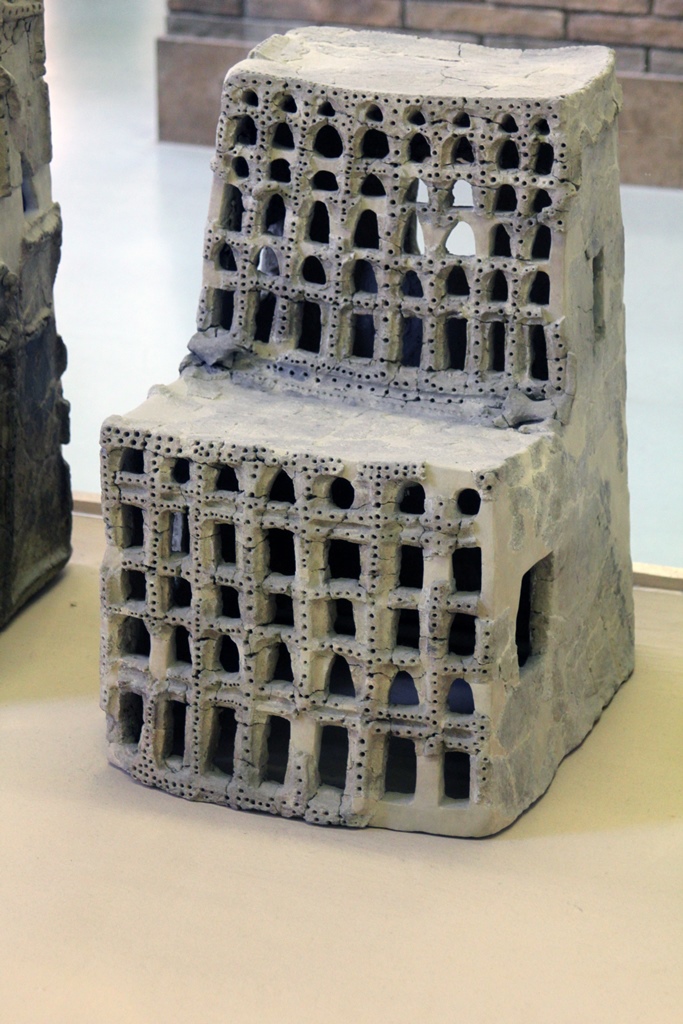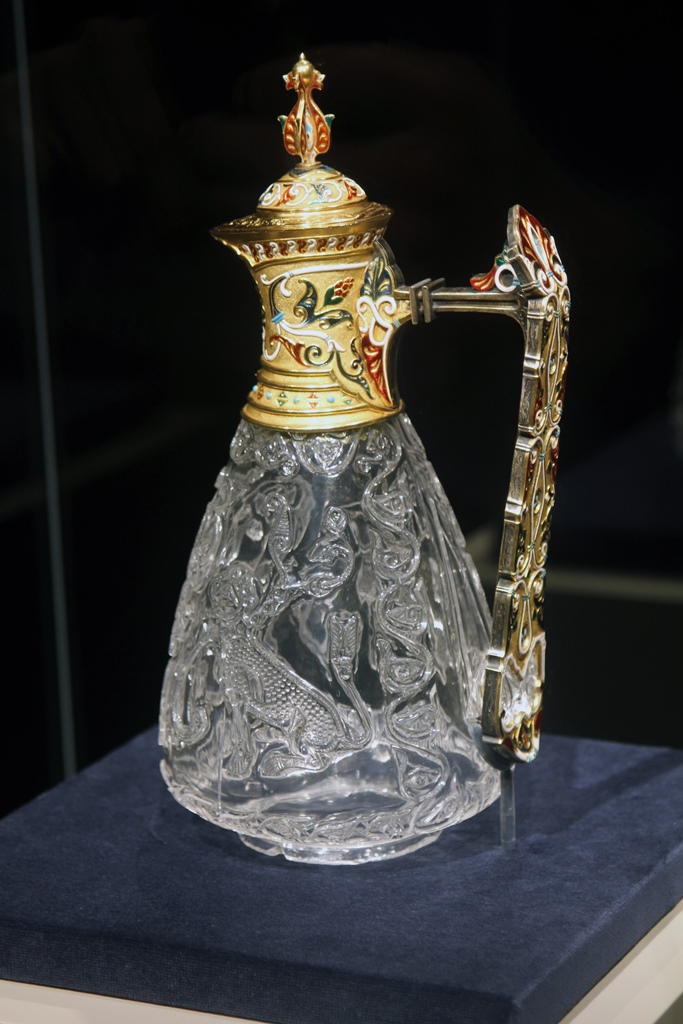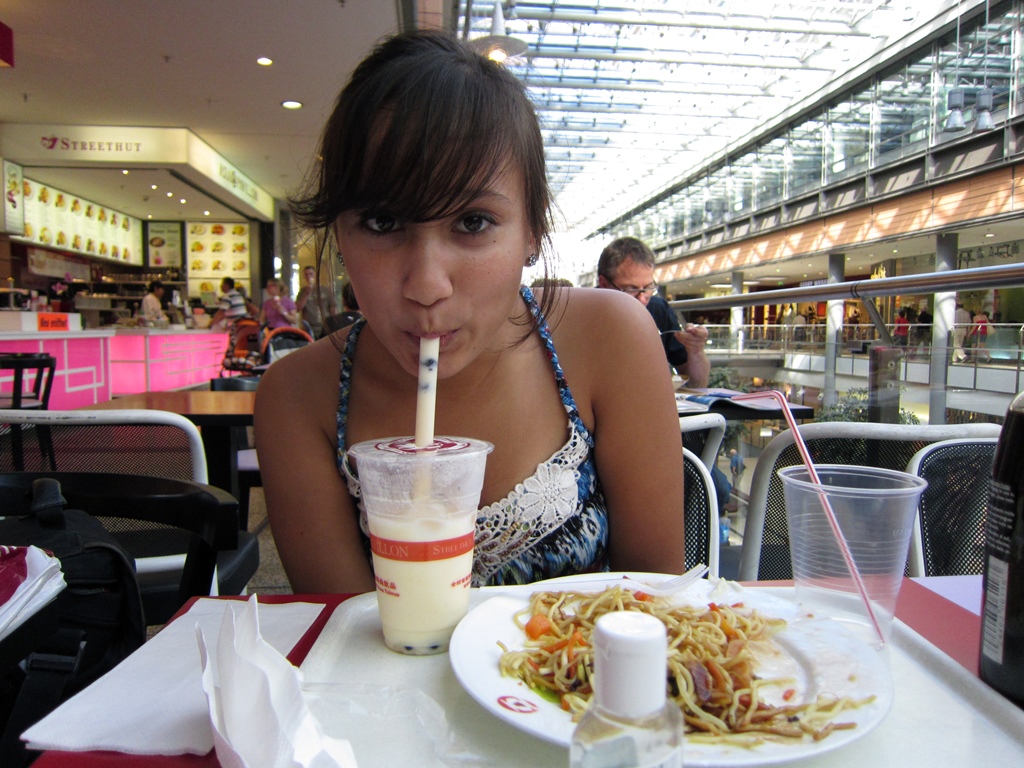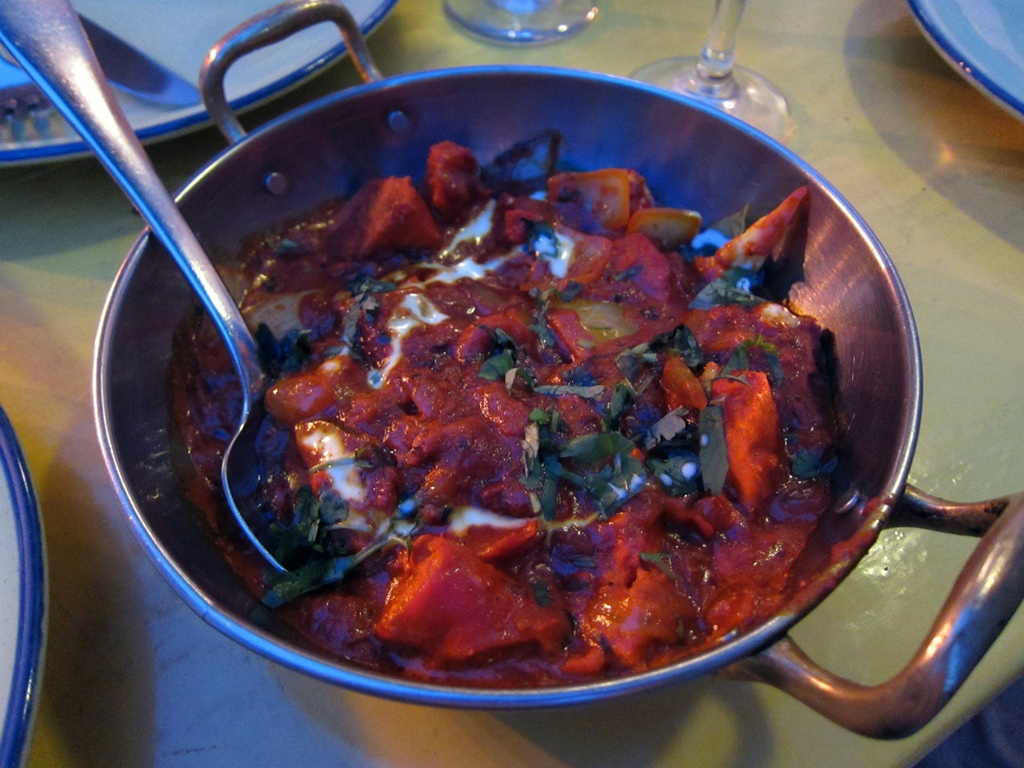... we found ourselves transported to a very different time and place. The decaying
marble had given way to walls of glazed bricks which were colored a vivid blue. On
the walls were designs which appeared to represent flowers and trees, and everywhere
there were animals captured in mid-stride. We had just emerged from an archway
covered with these animals, an archway which we discovered to be the reassembled
Ishtar Gate of the city of Babylon, named for the Babylonian goddess of love, war
and fertility.
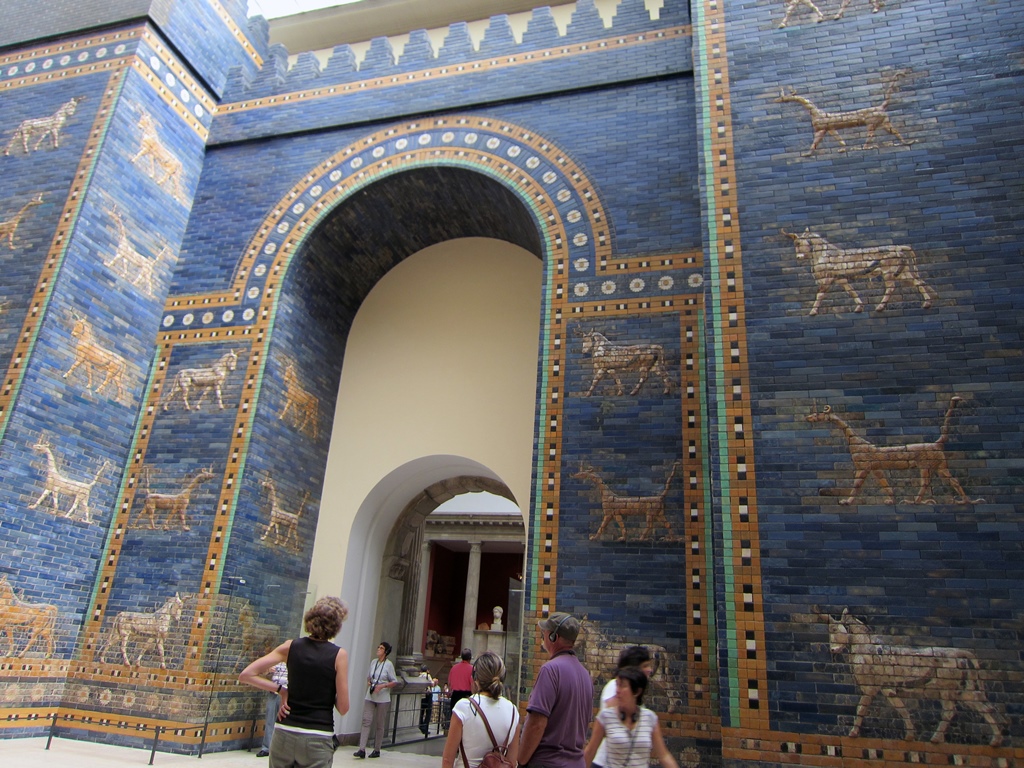
Ishtar Gate
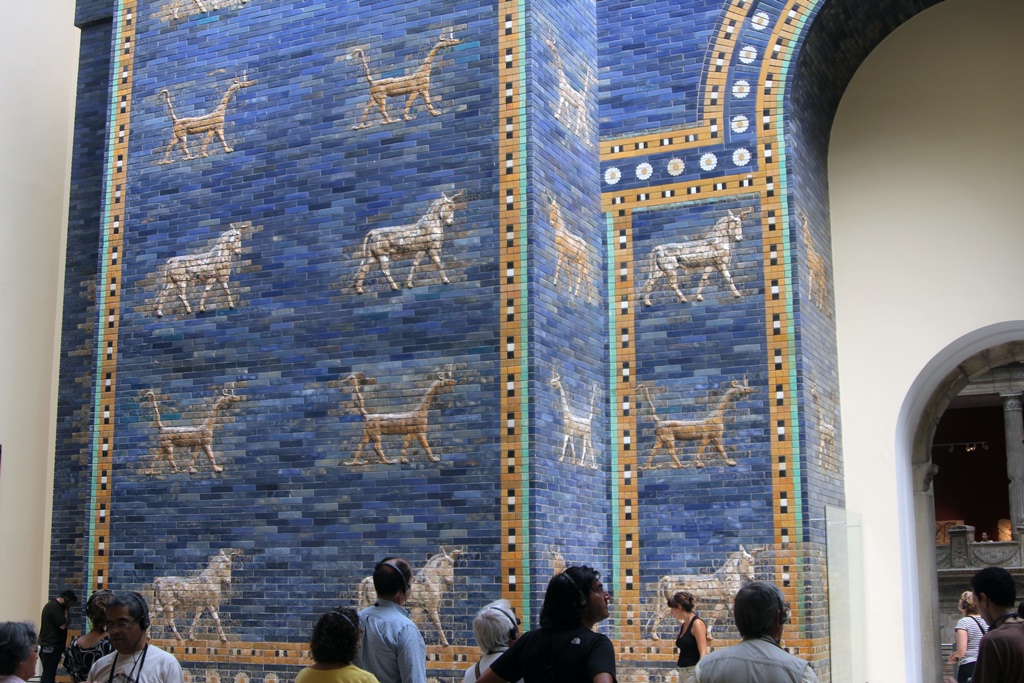
Ishtar Gate
Ishtar Gate and Façade of Throne Room
Its relatively good condition seemed to indicate that it was newer than the amazing
but damaged Roman and Greek era structures we’d just seen, but in fact the Ishtar
Gate is much older, having been built in 575 B.C., during the reign of Nebuchadnezzar
II. The reconstruction is 47 feet high and 100 feet wide. On closer examination,
the animals on the gate appeared to be of two types – one looked like some sort of
horned livestock animal, and the other looked like a product of someone’s
imagination. This creature, from Babylonian mythology, is called a mushussu
(also known as a sirrush), and appears to be a scaly assemblage of parts from
a lion, an eagle, a snake and a dragon. The livestock animal was a genuine animal
known as an aurochs, and was the ancestor of modern-day domestic cattle. They
are thought to have become extinct in the 17th Century.
Mushussus and Aurochses
To the left of the archway is an inscription in Sumerian that commemorates the
gate’s completion; this inscription is a source of information about the gate
which is much more specific than that about most structures of similar age.
Commemorative Inscription
As large as this gate is, it was only the outer gate of the Ishtar entrance to the
city. There was also an inner gate which was larger (maybe 60-70 feet tall) and
more fortified. This gate is actually also in the museum’s collection, but it’s
too big to be displayed in the Pergamon Museum and is currently in storage. Back
in the day, both gates were approached via a long processional street which was
lined with similarly glazed blue bricks featuring a parade of lions. A section
of the processional walls is also on display at the Pergamon.
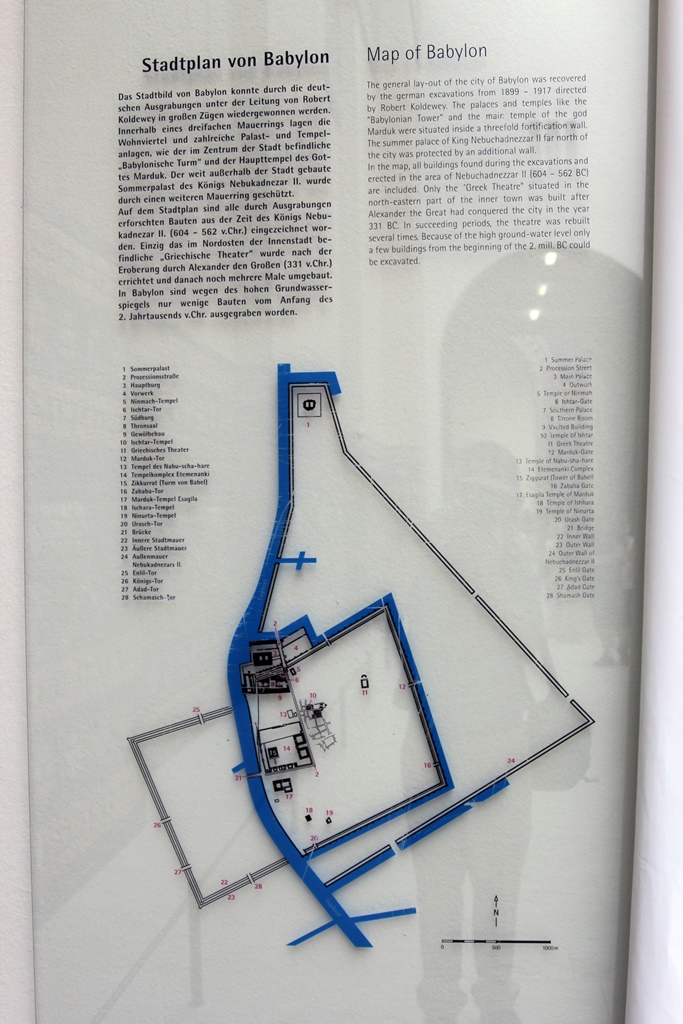
Map of Babylon
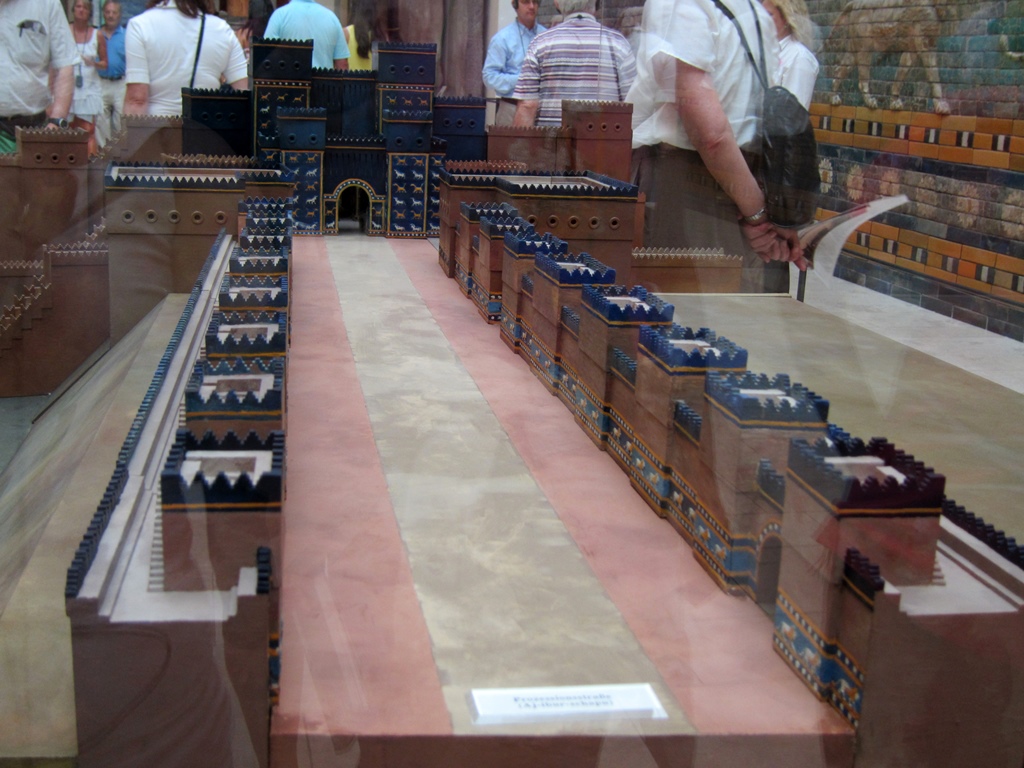
Model of Processional Street

Processional Street Segment
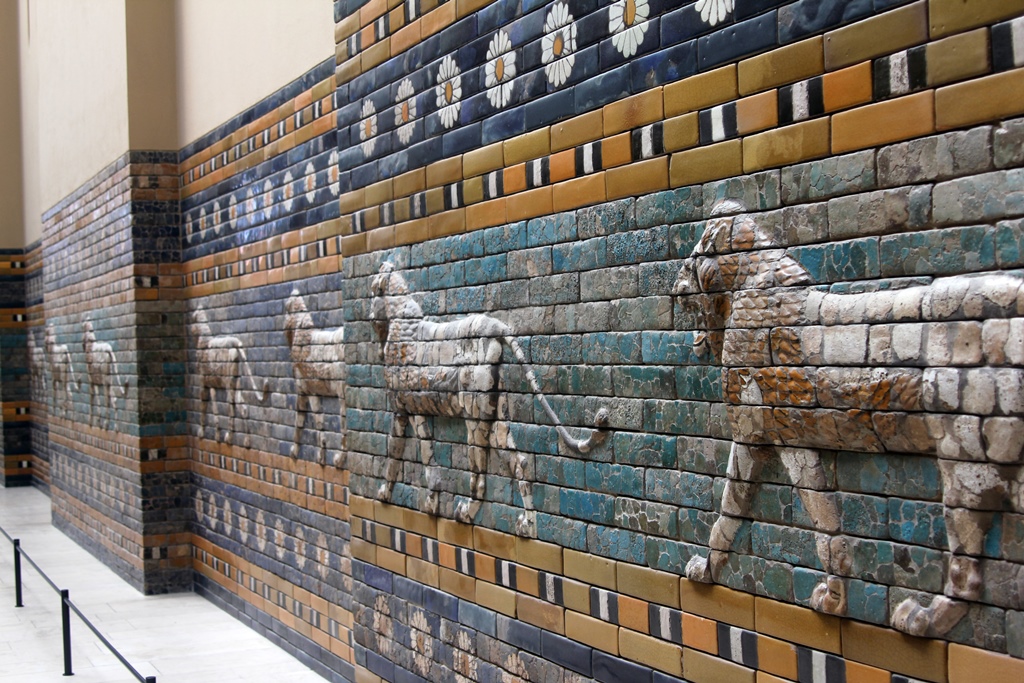
Wall, Processional Street
Also on display are panels from the façade of the city’s throne room.
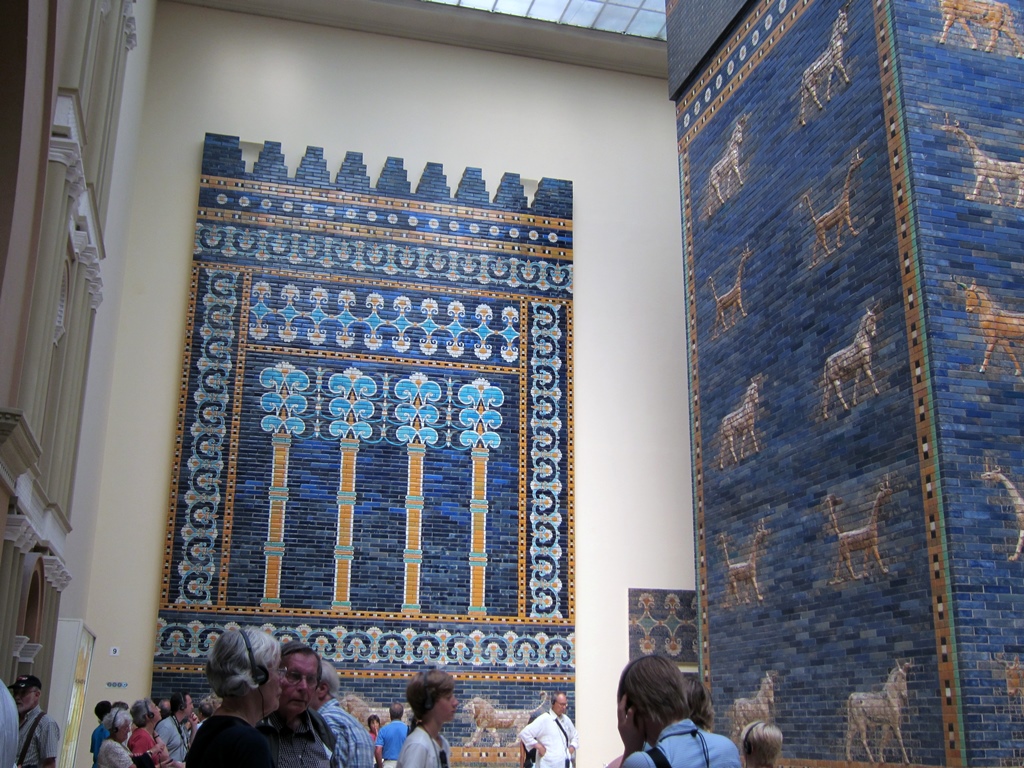
Panel, Throne Room Façade
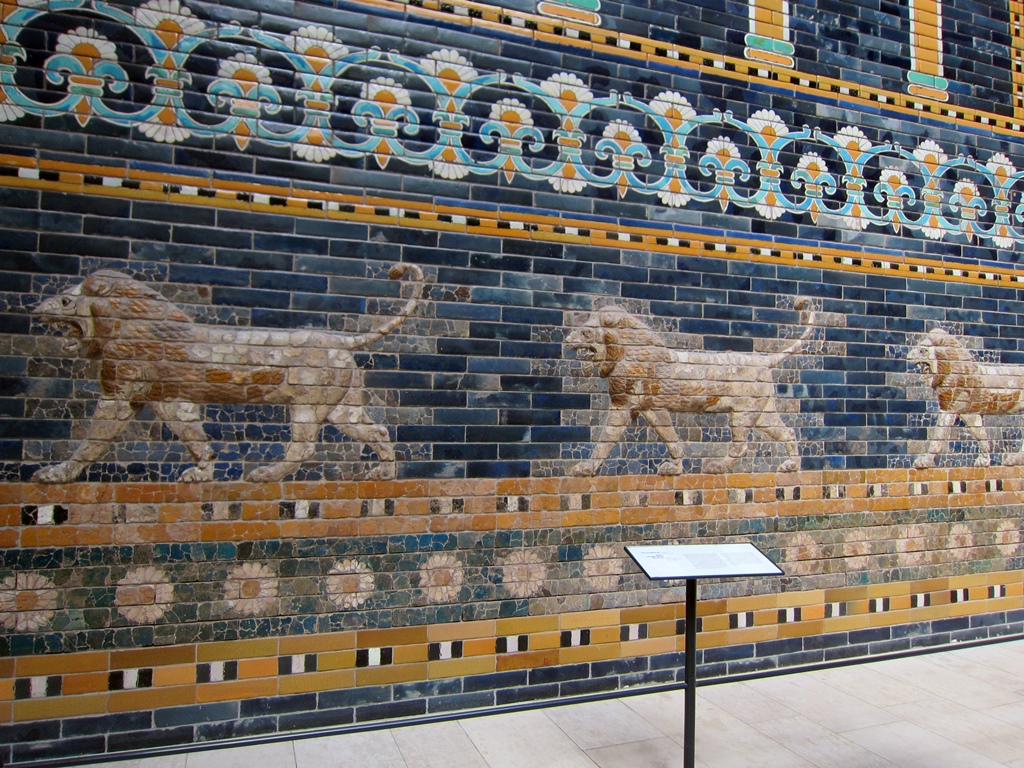
Procession of Lions
Façade Panel and Hammurabi Codex
Near one of them is a seven-foot-tall monument which bears a detailed inscription
of the complete code of law originated by the Babylonian king Hammurabi. It’s
actually a copy (the original is in the Louvre in Paris), and the original is
much older than the gate (the law was enacted around 1772 B.C. – Babylonia was a
very old kingdom by the time of the Ishtar Gate, having spent most of that time
either subjugated by or in conflict with the neighboring kingdom of Assyria;
both kingdoms were located in current-day Iraq).
Hammurabi Codex (copy)
Wandering into side rooms off of Babylon’s processional street, we found many
other artifacts from the same region. This is because the act of passing
through the Ishtar Gate brought us into a museum within the museum, a museum
called the Museum of the Ancient Near East. First we found pieces from the
city of Uruk, which was the world’s most populous city in 2900 B.C., with
50,000-80,000 inhabitants. Uruk eventually found itself within the borders
of Babylonia, but before that it was part of the region of Sumer. Uruk was
established sometime around 4000 B.C., and gave its name to the Uruk Period,
which extended from 4000 to 3200 B.C. Some of Uruk’s artifacts are in
surprisingly good condition for such an old civilization. Particularly
striking are its cone mosaics, which are made up of cone-shaped colored
stones.
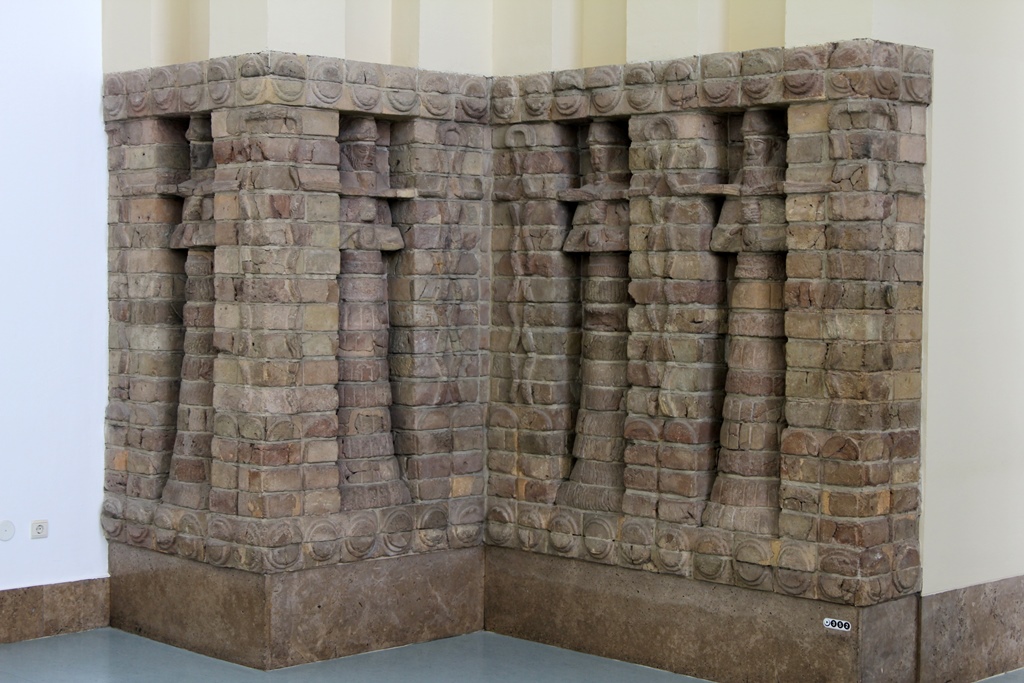
Segment from Inanna Temple, Uruk (ca. 1413 B.C.)
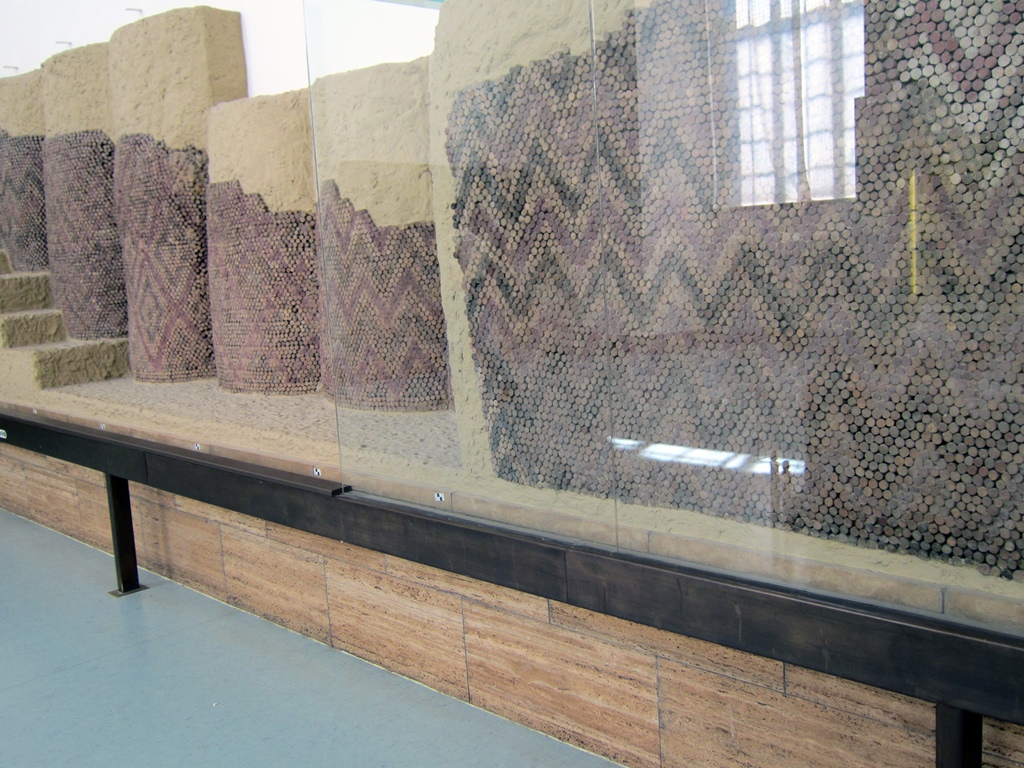
Habuba Kabira Wall with Cone Mosaics (4th Millenium B.C.)
Votive Statue, Mari (ca. 1950 B.C.)
Moving into other rooms we found trademark stone representations of Assyrian
mythology. There were stone reliefs of beings known as genii. A genius
is a winged creature with a human-like body and the head of a bearded human or
of a bird. They can often be seen tending to trees or brandishing little handbags.
Two Genii with Magic Purses
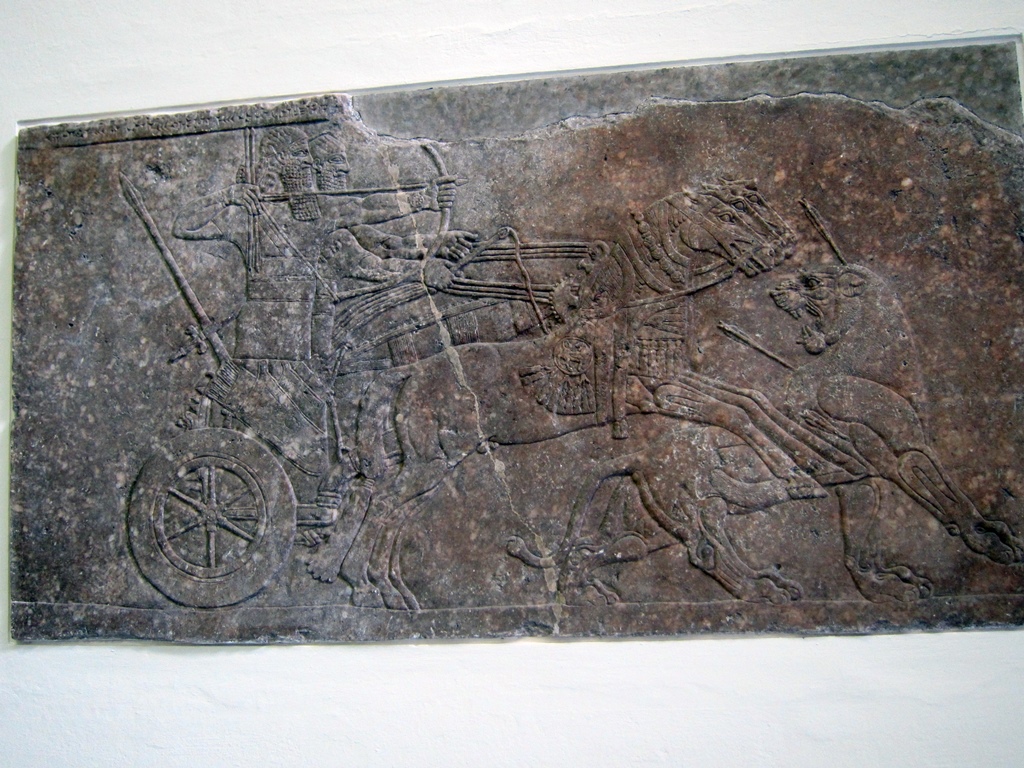
Relief of Lion Hunt, Nimrud (883-859 B.C.)
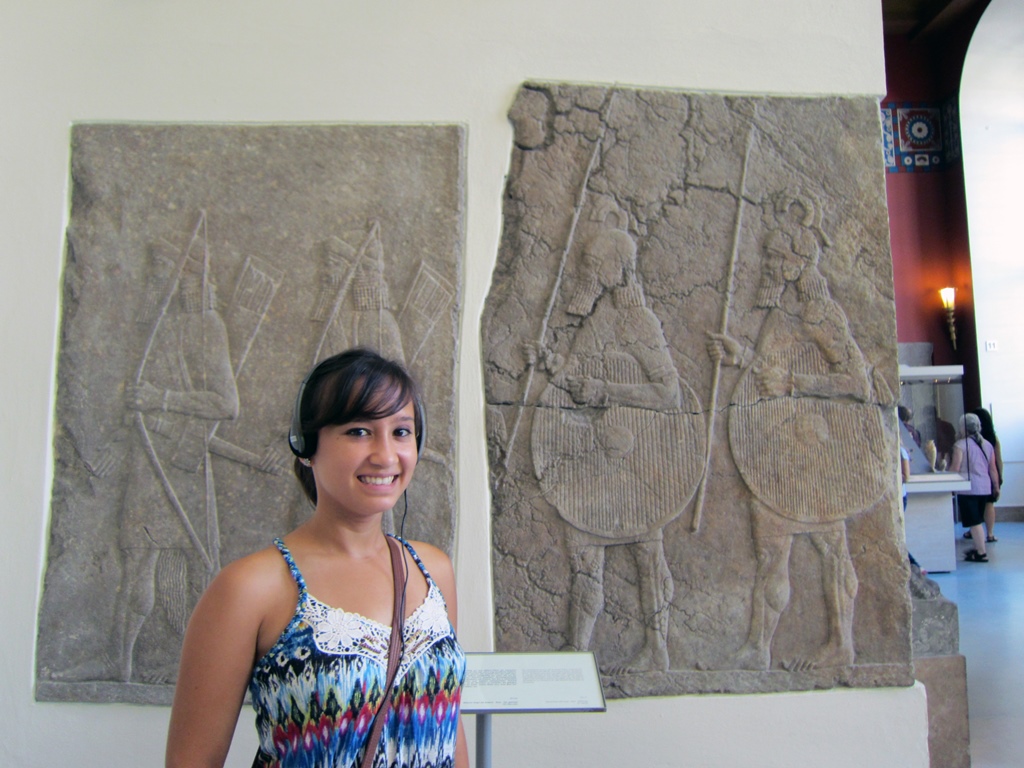
Connie and Reliefs
Another Assyrian creature is the lamassu, a large animal with a lion’s body,
a bearded human head and wings. Lamassu were considered to be protective deities,
and were often found at entrances to cities and palaces.
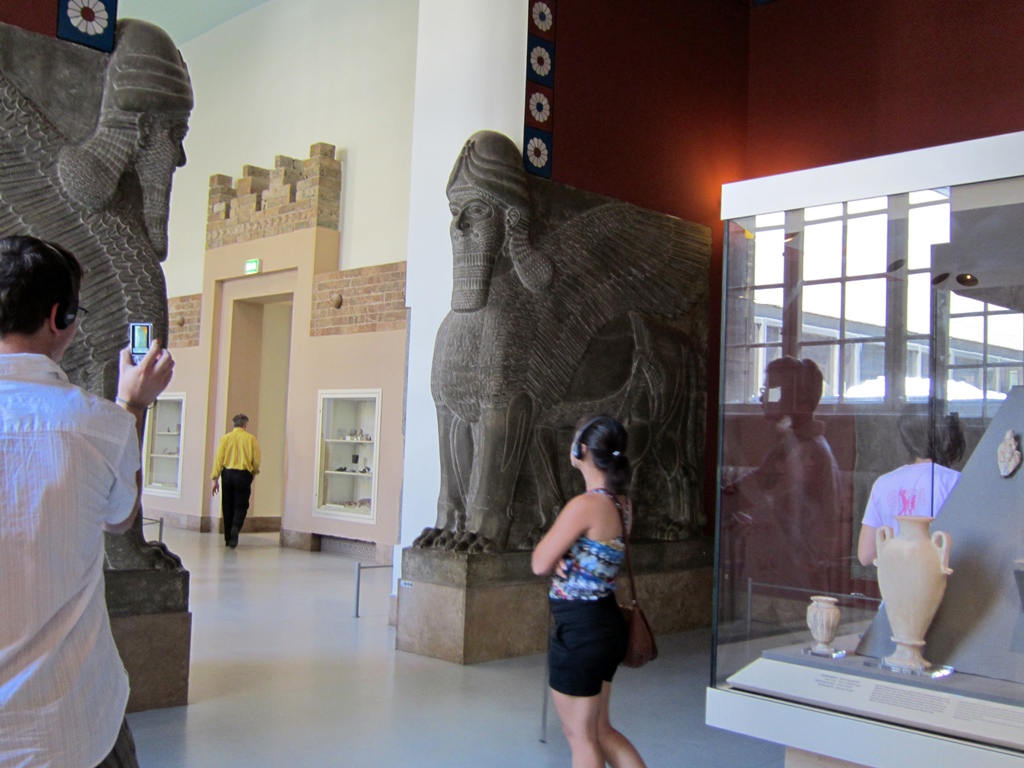
Connie and Lamassu
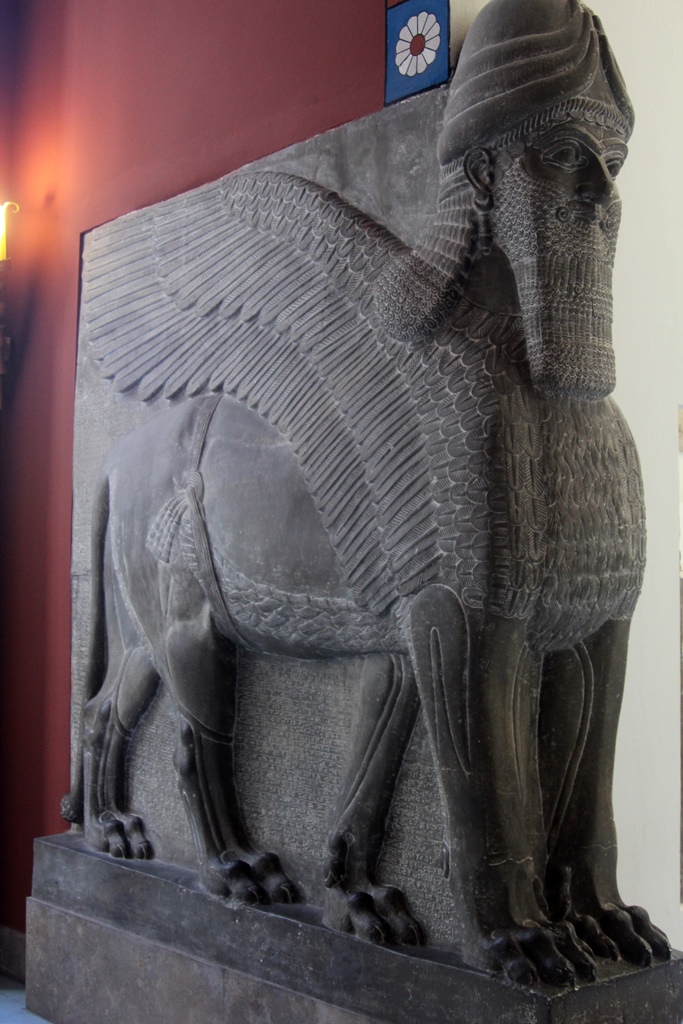
A Lamassu
Continuing through the near eastern collection, we came across numerous
other artifacts from cities in the region.
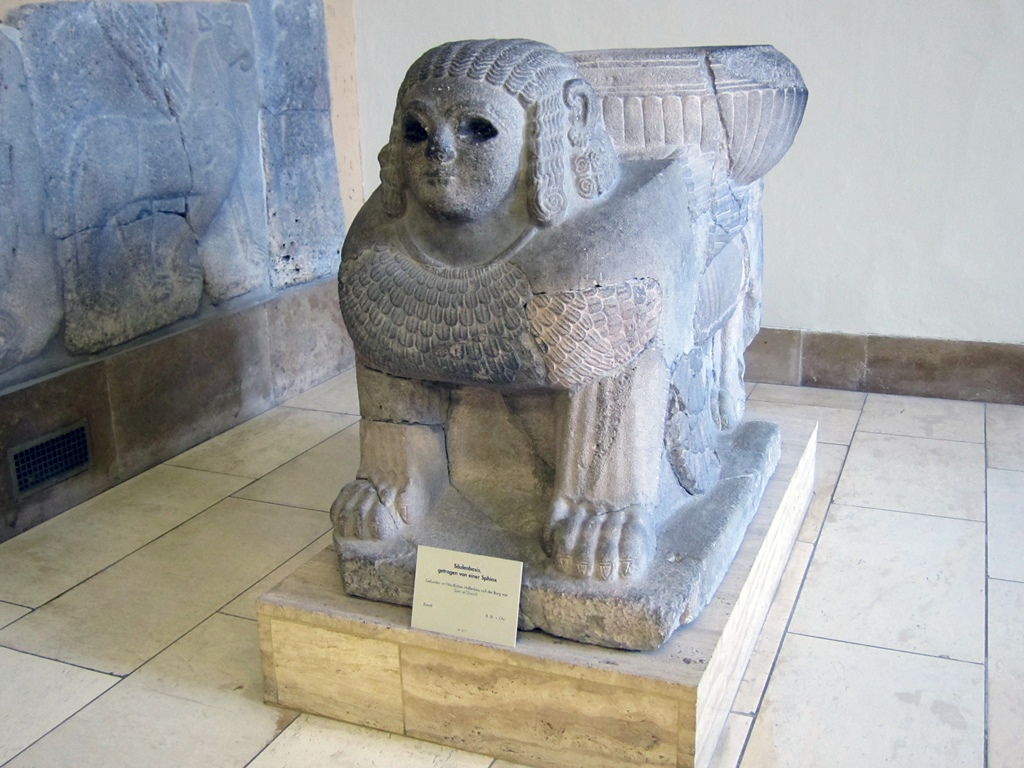
Columnar Base, Supported by a Sphinx, Sam'al (8th C. B.C.)
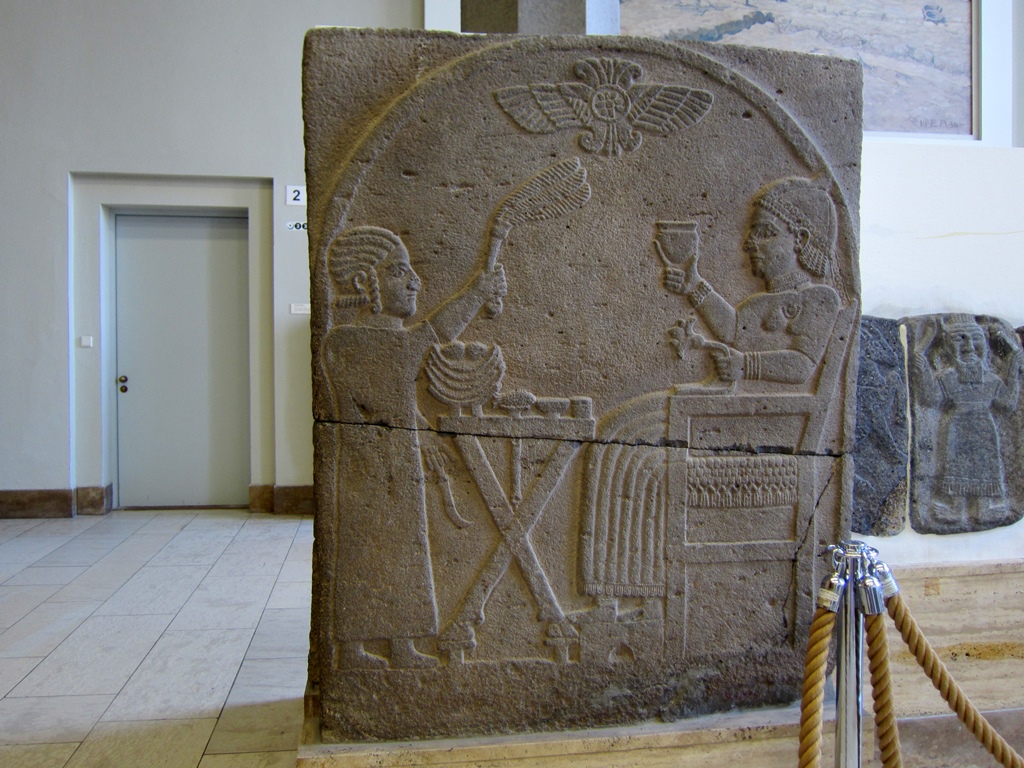
Funerary Stele of a Noble Lady, Sam'al (8th C. B.C.)
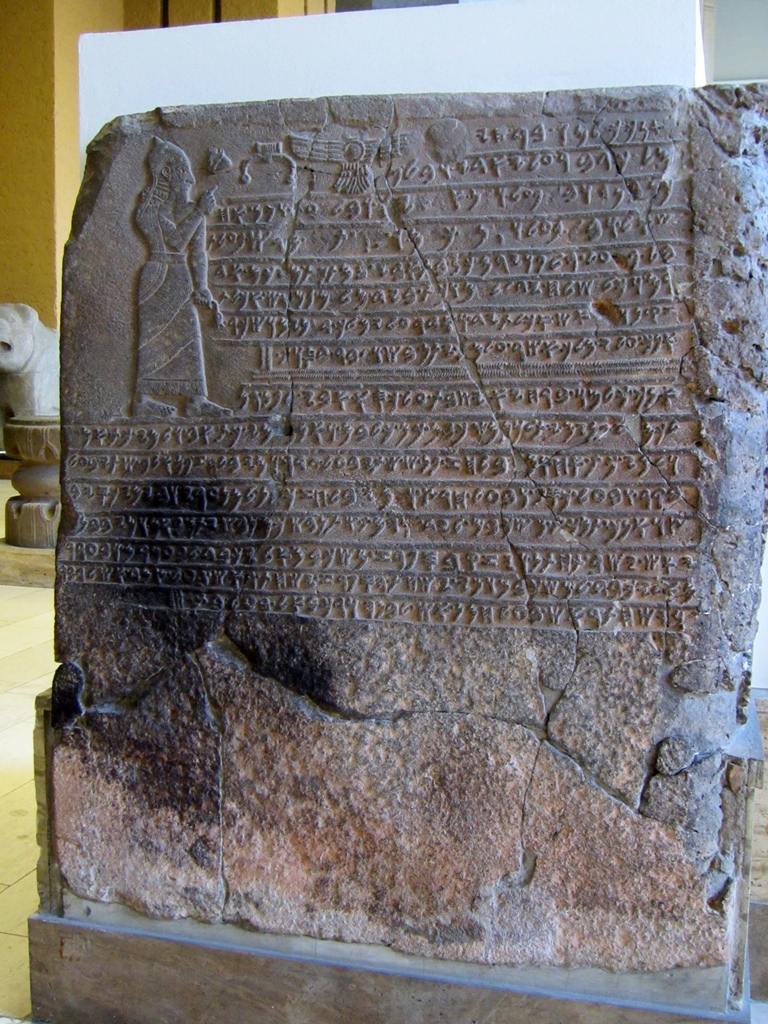
Stele of Prince Kilamuwa, Sam'al (9th C. B.C.)
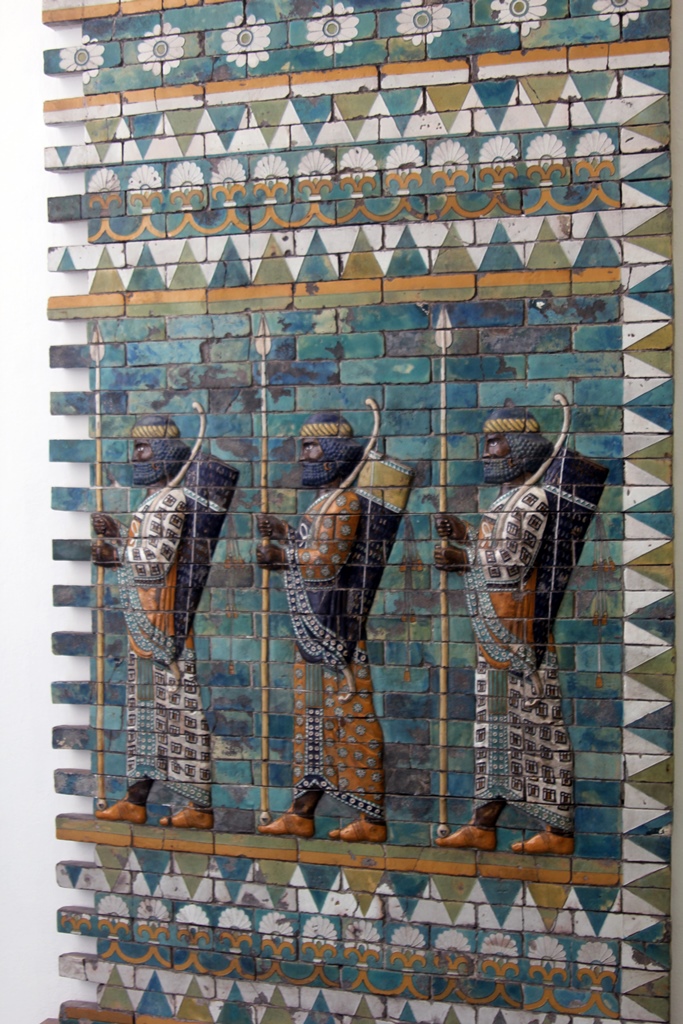
Relief of a Royal Bodyguard, Palace of Darius I, Susa (521-486 B.C.)
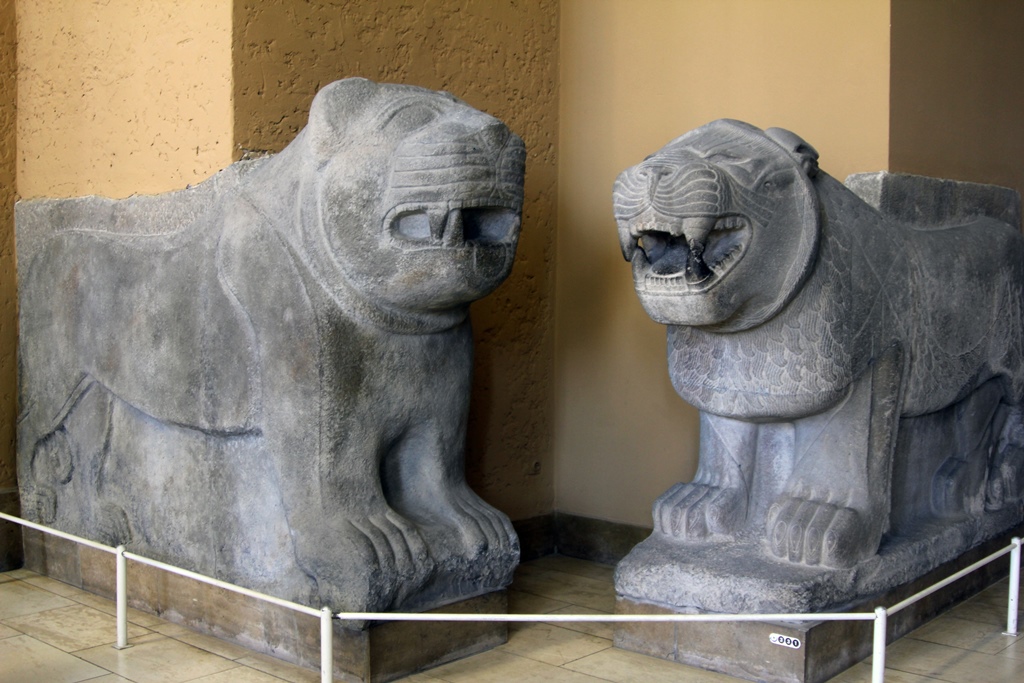
Stone Lions, Citadel of Zincirli (8th-9th C. B.C.)
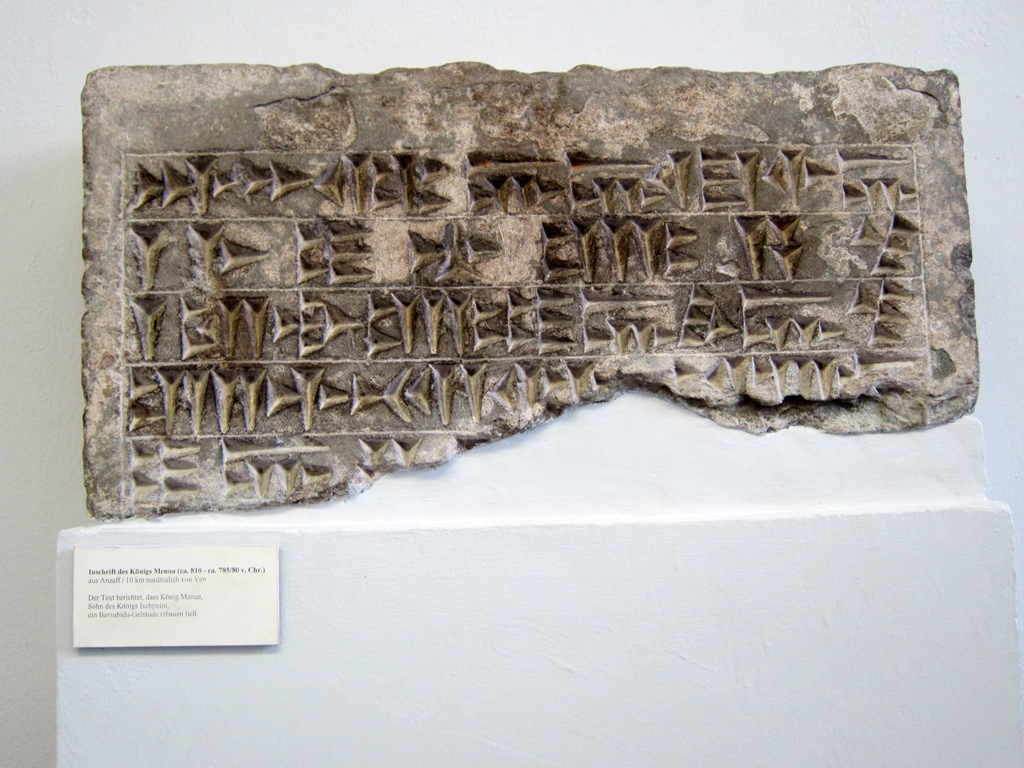
Inscription of King Menua (ca. 810-780 B.C.)
Really Uncomfortable Chair?
After completing our circuit through the rooms of the Ancient Near East Museum, we
found a stairway that took us up to another museum that occupies part of the
Pergamon Museum, this being the Museum of Islamic Art. This museum was begun in
1904 with a donation of woven carpets, and grew to include many Islamic art
objects from the 8th through the 19th Centuries.
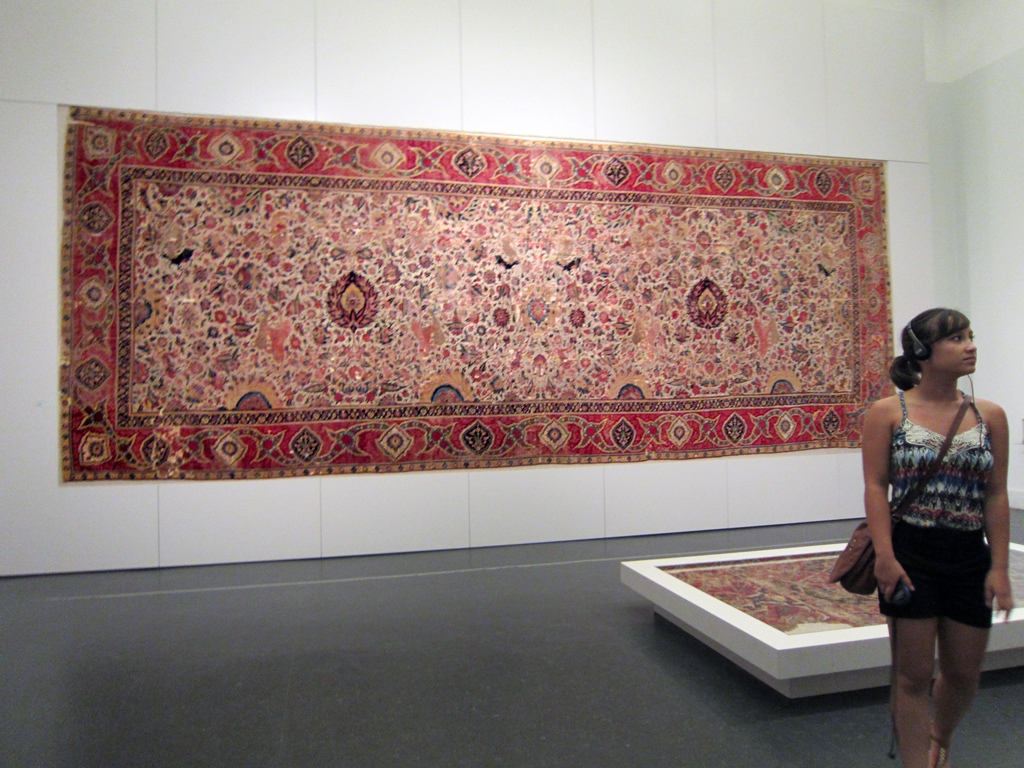
Connie with Rug
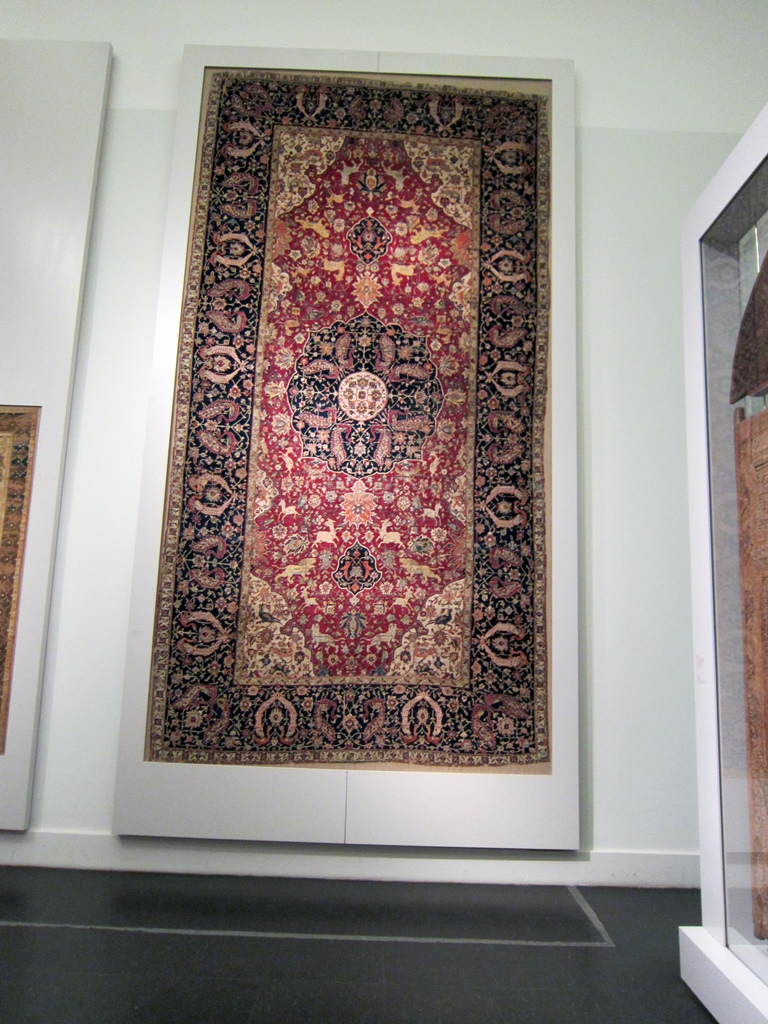
Medallion Carpet with Animals, Iran (16th C. A.D.)
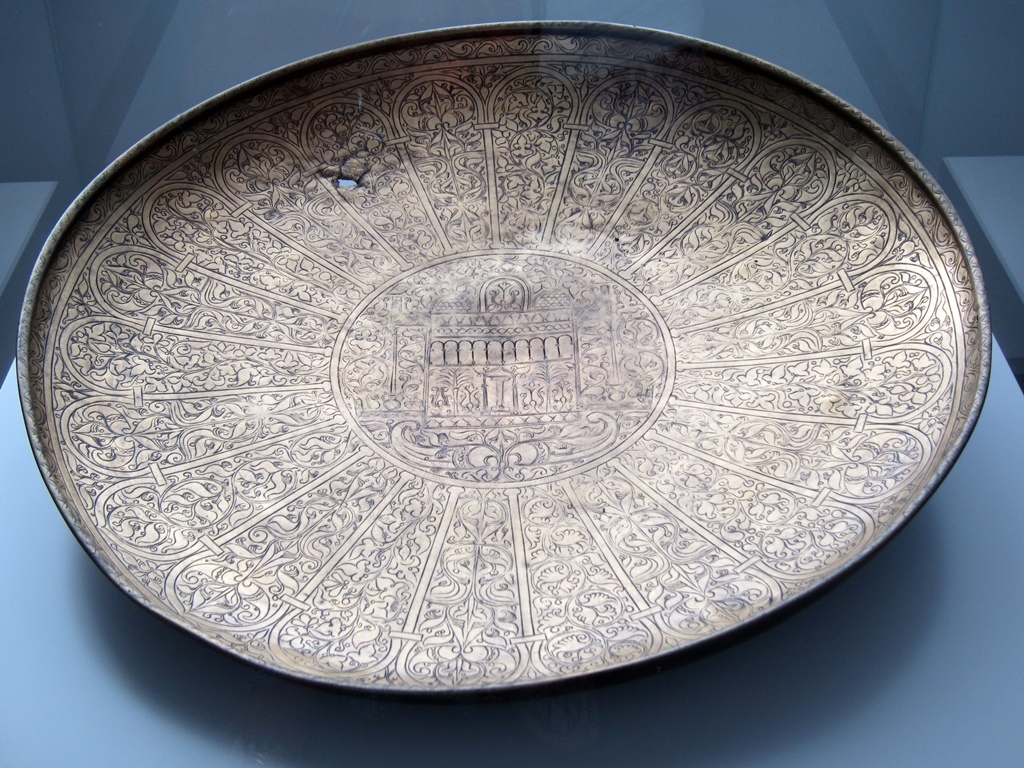
Shallow Bowl with Domed Building, Iran (8th C. A.D.)
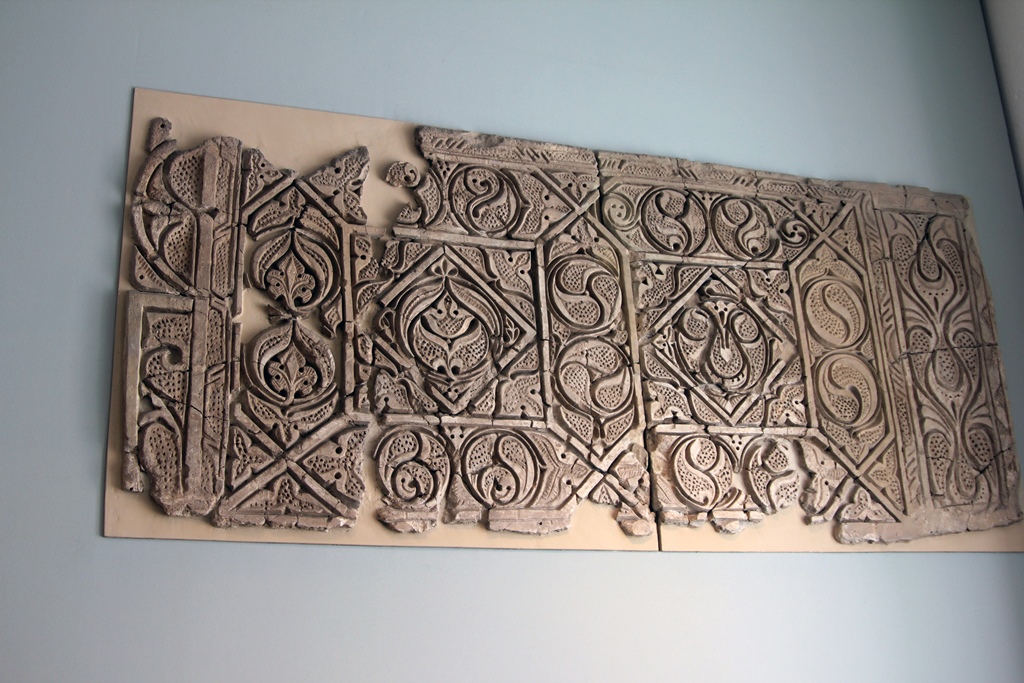
Wall Decoration from a Private House, Iraq (9th C. A.D.)
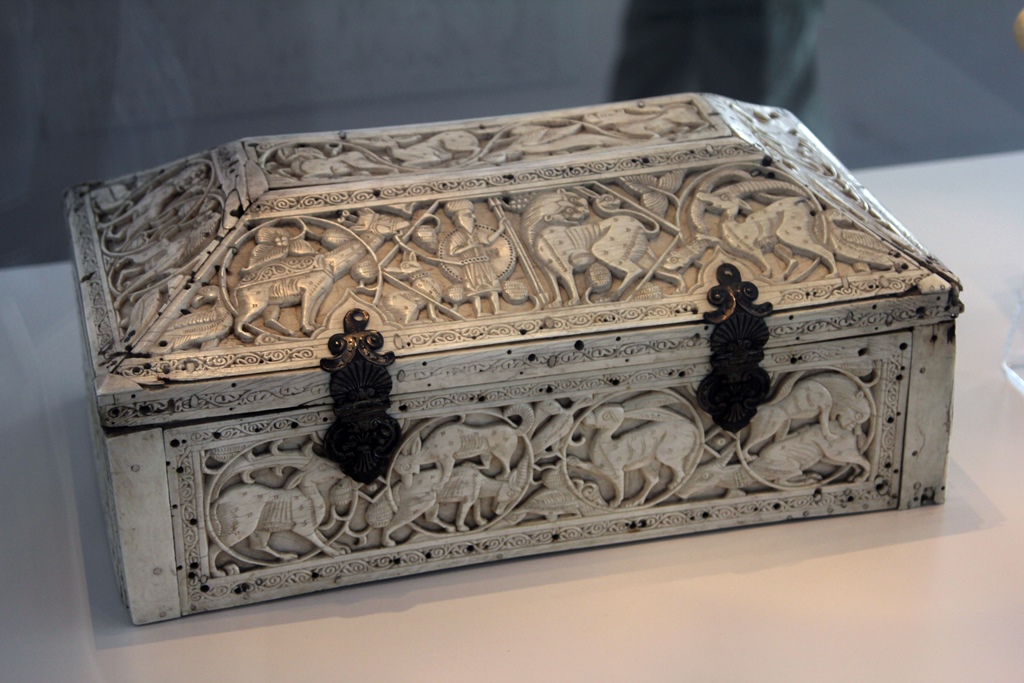
Ivory Box, Italian or Sicilian (11th-12th C. A.D.)
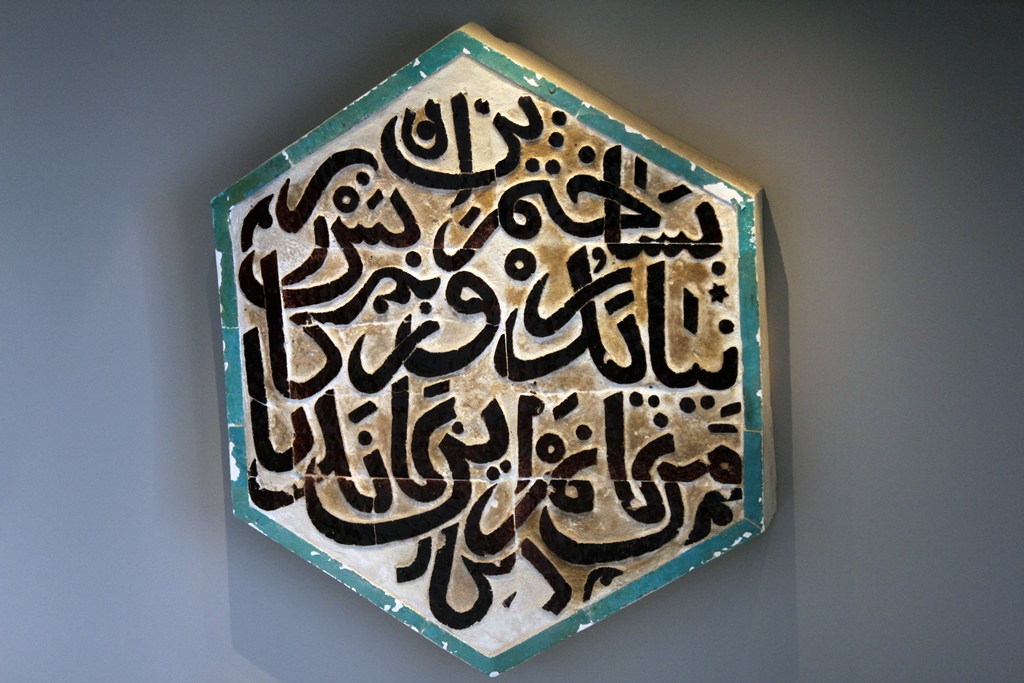
Decoration with Artist's Inscription, Turkey (ca. 1242-43)
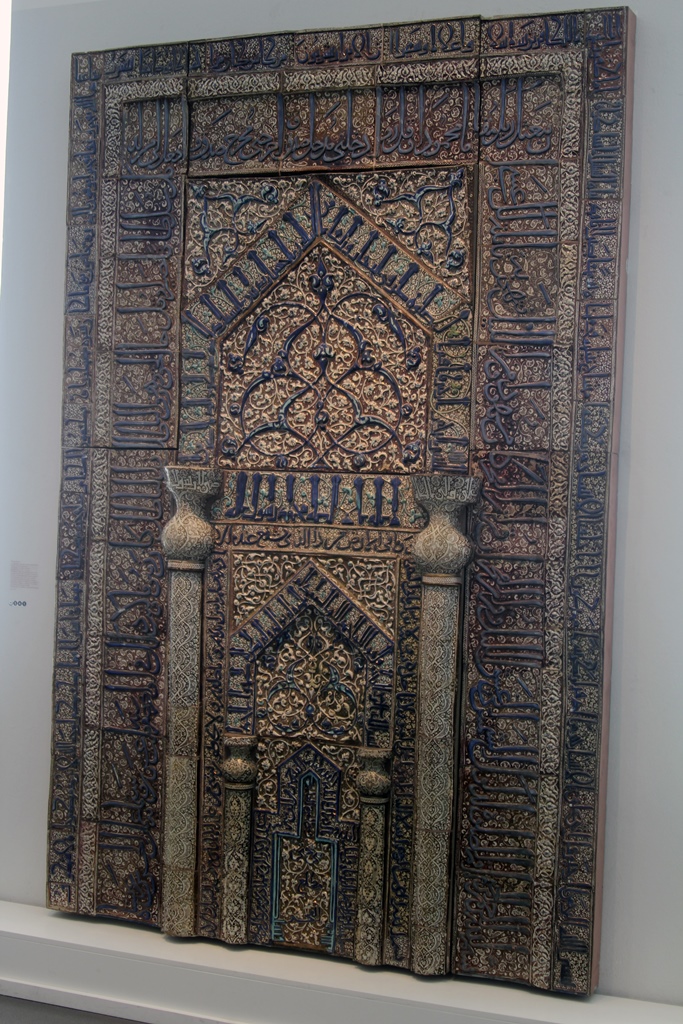
Prayer Niche, Iran (13th C. A.D.)
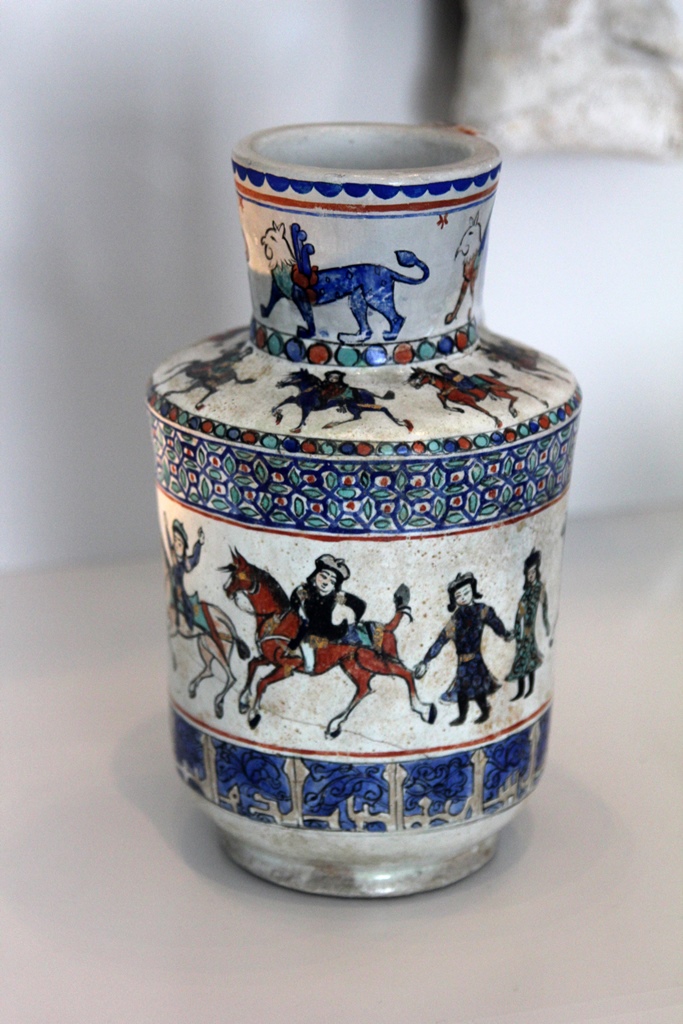
Vessel with Female Figures, Iran (ca. 1200 A.D.)
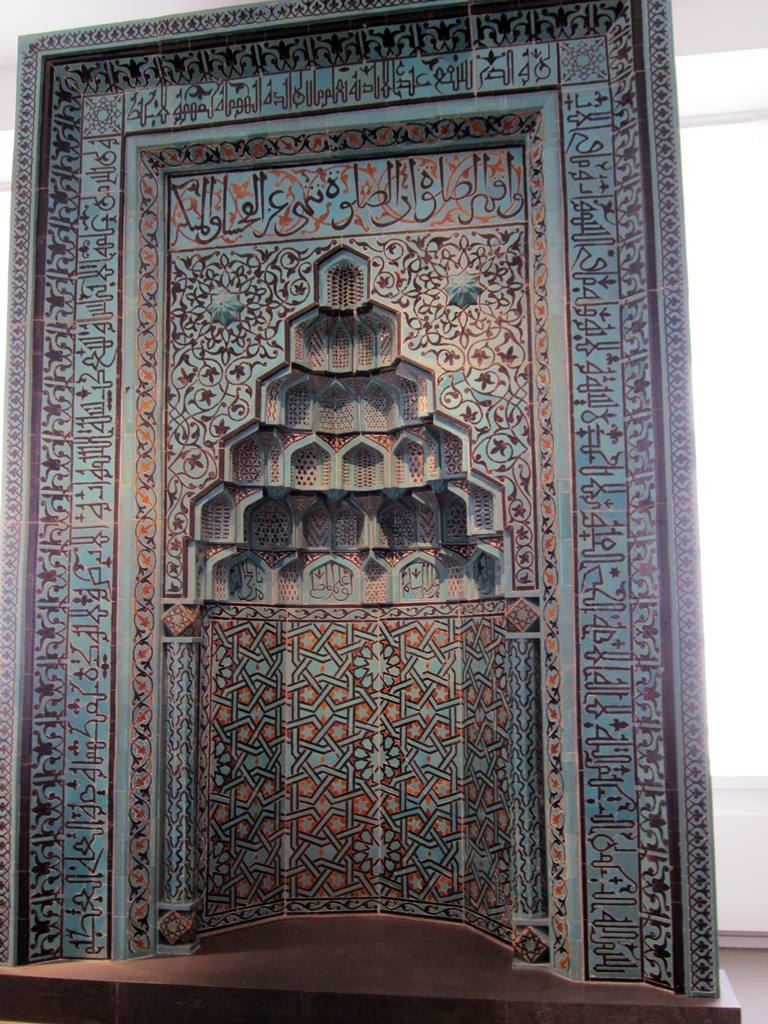
Prayer Niche with Koran Verse (13th C. A.D.)
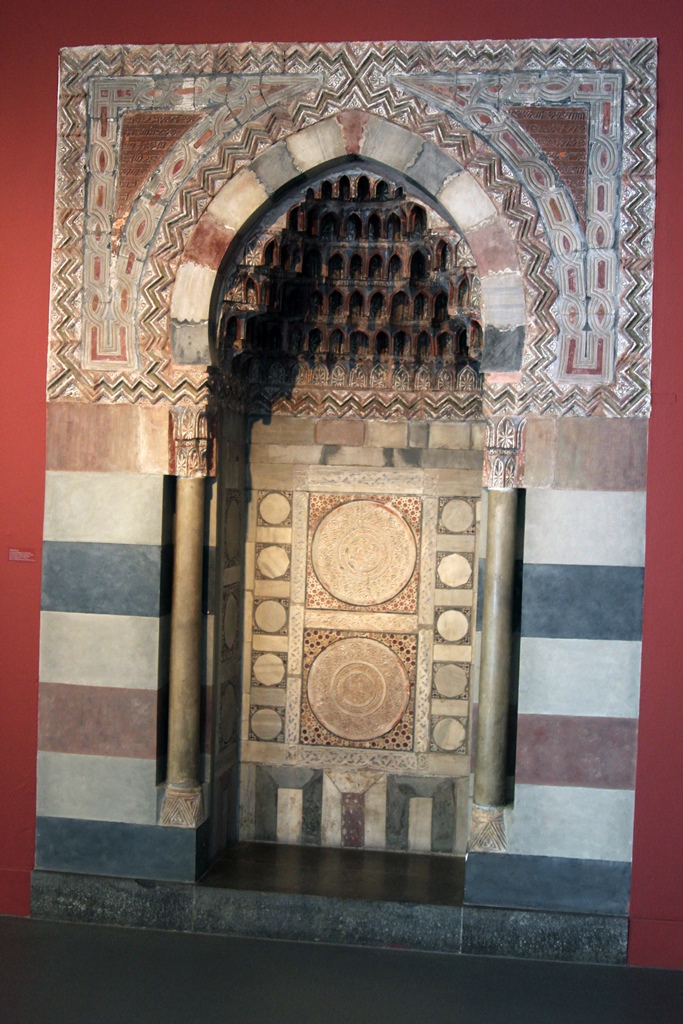
Stalactite Niche, Syria (15th-16th C. A.D.)
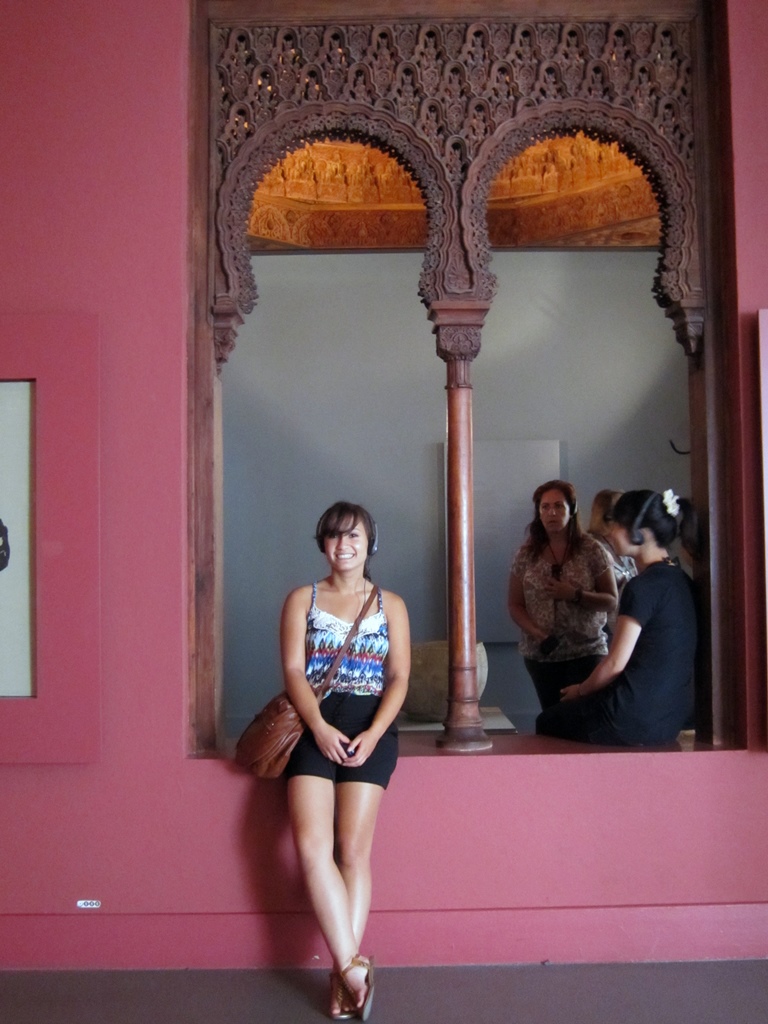
Connie and Window
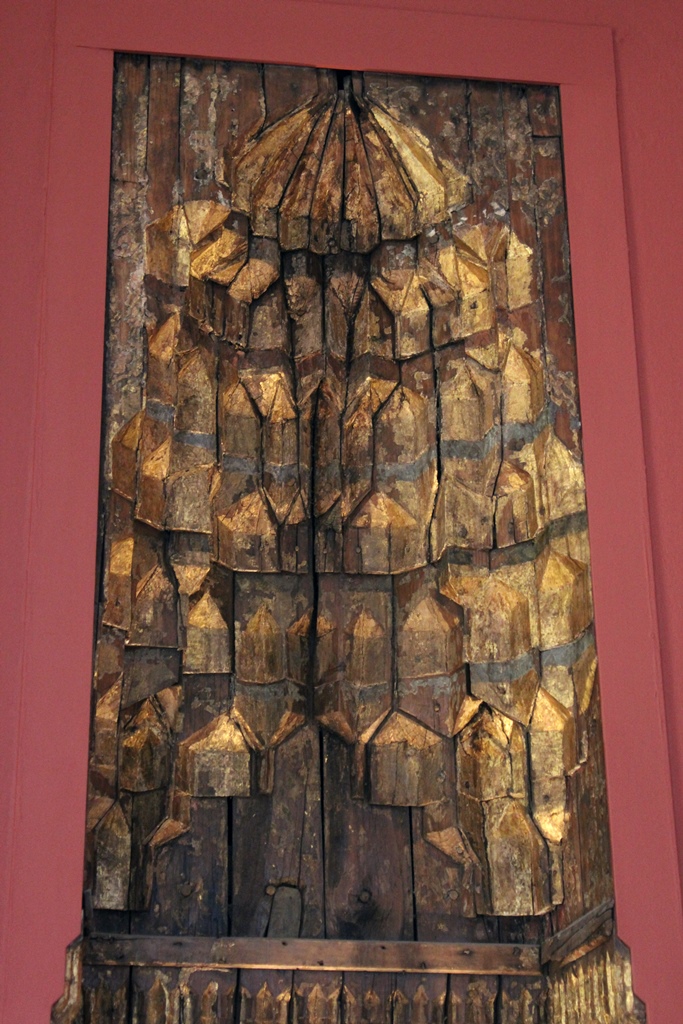
Stalactite Niche, Egypt (14th-15th C. A.D.)
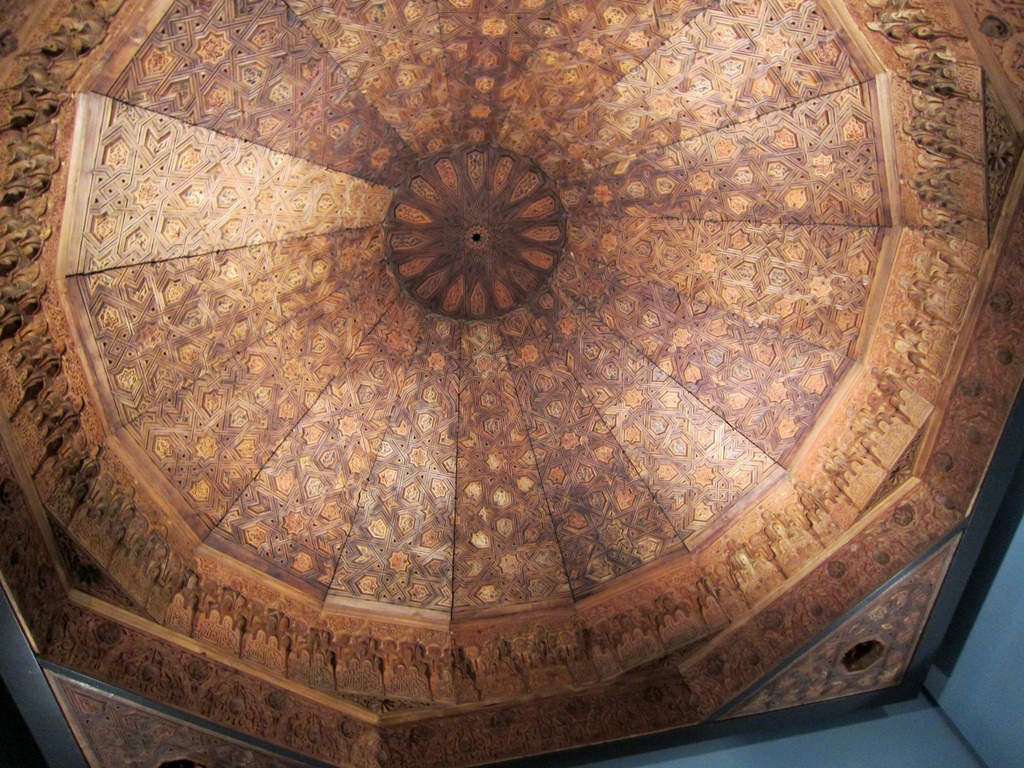
Cupola from the Alhambra, Granada (14th C. A.D.)
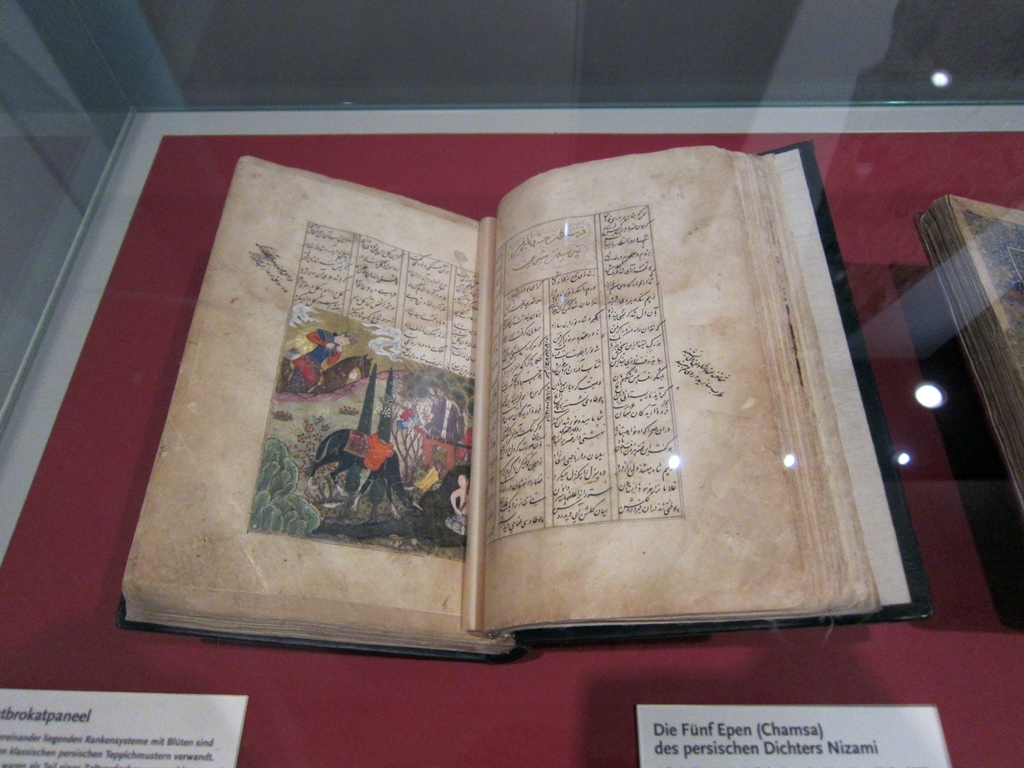
Poet Nizami's Epics, Shiraz (1442-44 A.D.)
Rock Crystal Ewer, Egypt (ca. 975-1025 A.D.)
A highlight is the elaborately carved façade of the 8th Century Mshatta
Palace. This palace was discovered and excavated in Jordan in the 19th
Century, and the façade was a gift from Ottoman Sultan Abdul Hamid II to
Kaiser Wilhelm II.
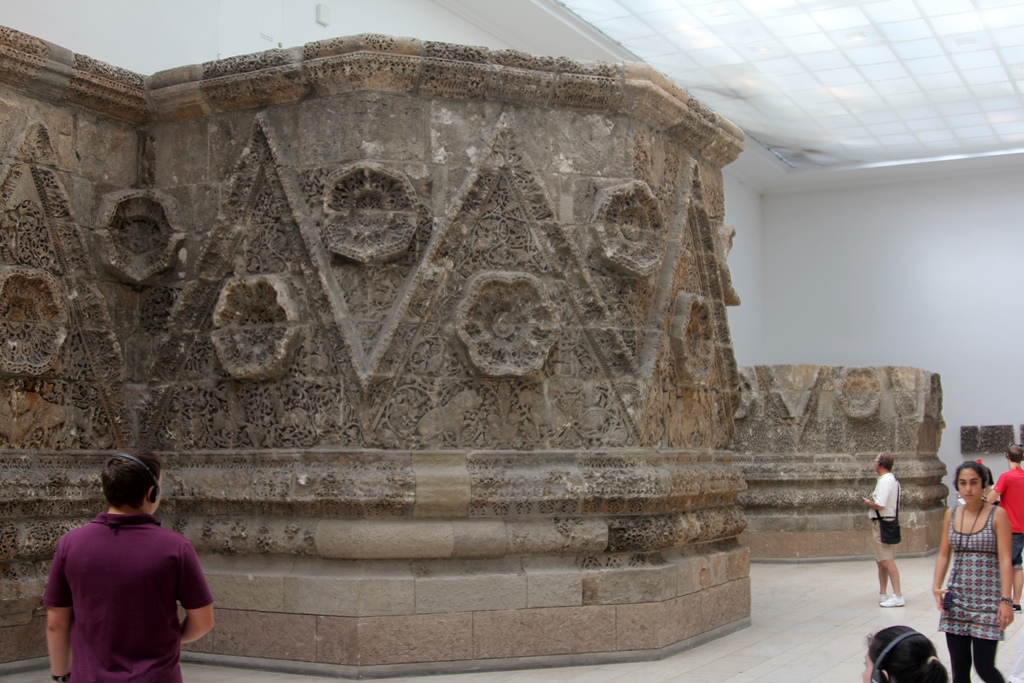
Façade of the Mshatta Palace, Jordan (8th C. A.D.)

Façade of the Mshatta Palace
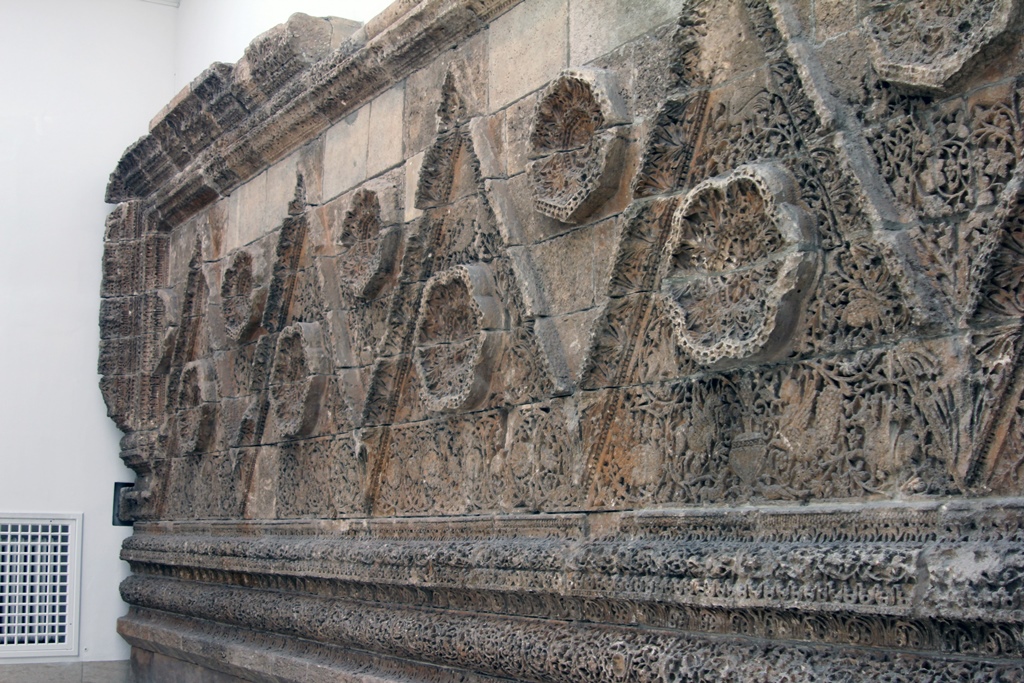
Palace Façade
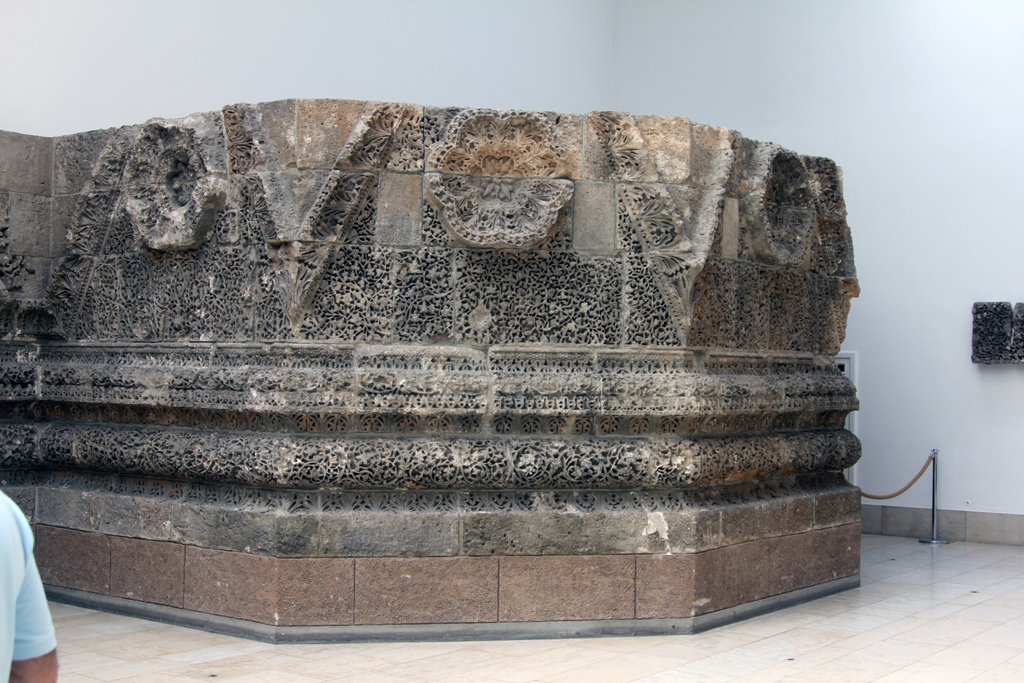
Palace Façade
Another highlight is the 17th Century Aleppo Room, an elaborately decorated
room that has been transported from Aleppo, Syria. The decorations are a
combination of Christian and Islamic imagery, and were commissioned by a
Christian citizen of Aleppo, to be used in his home’s entrance room. The
room was acquired by the museum in 1912.
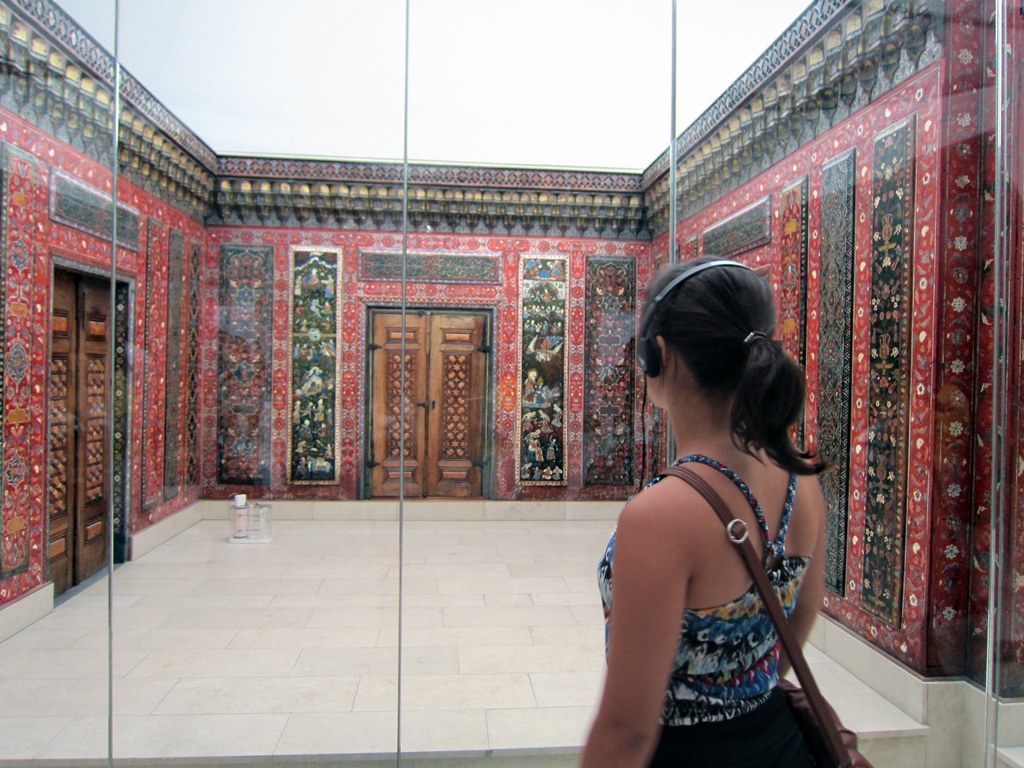
Connie and Aleppo Room
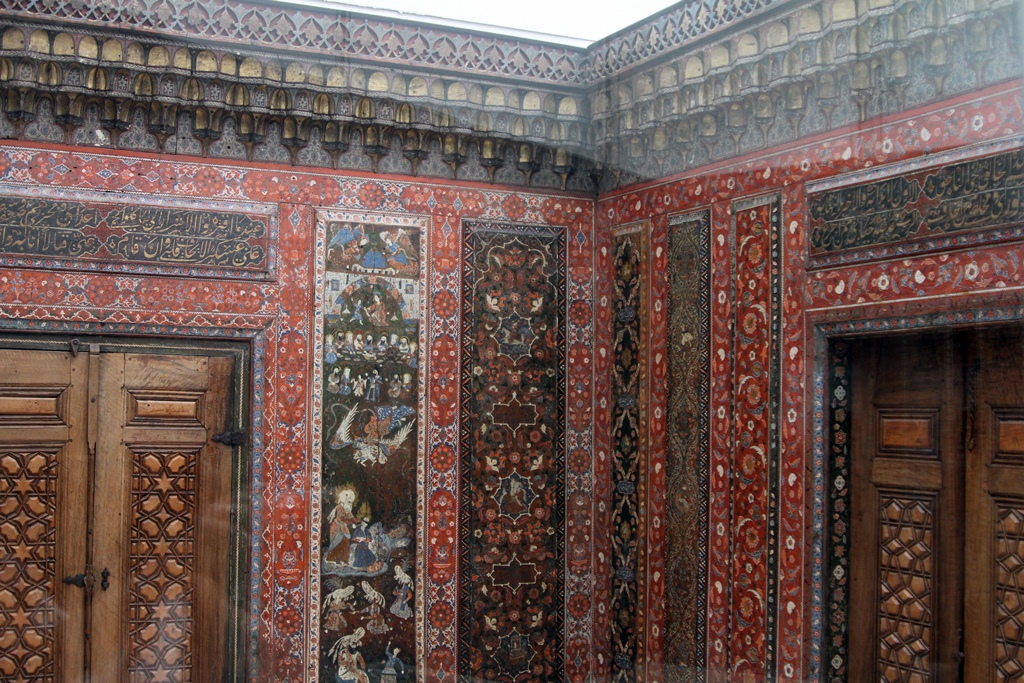
Aleppo Room (detail)
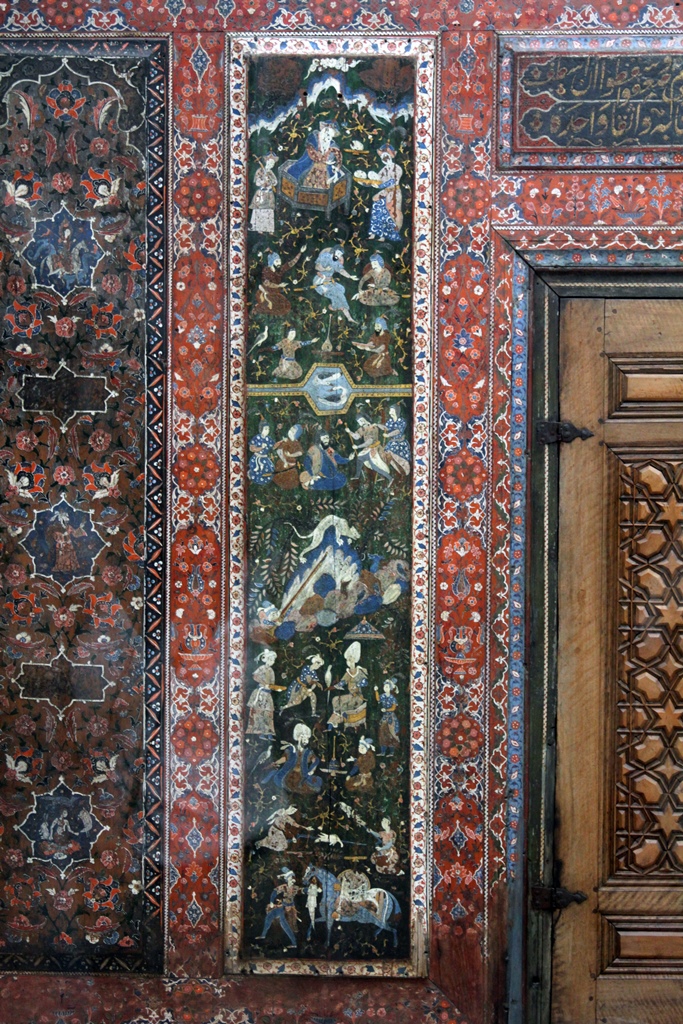
Aleppo Room (detail)

Aleppo Room
From the Pergamon Museum we retraced our steps to the S-Bahn station.
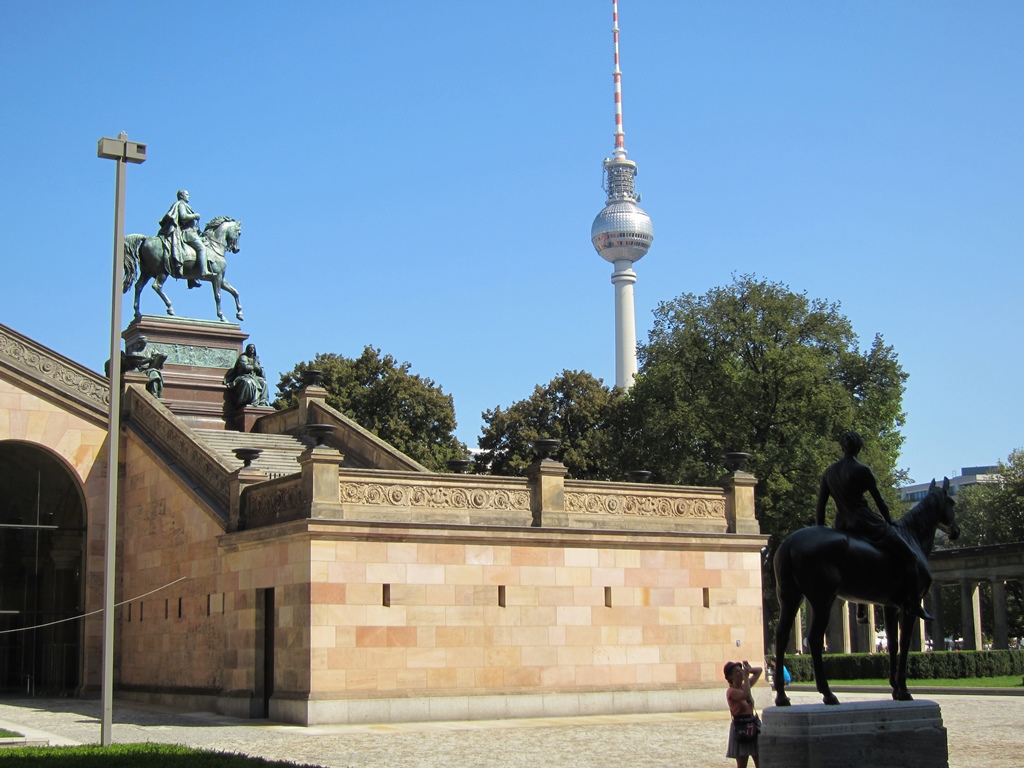
Alte Nationalgalerie and Fernsehturm
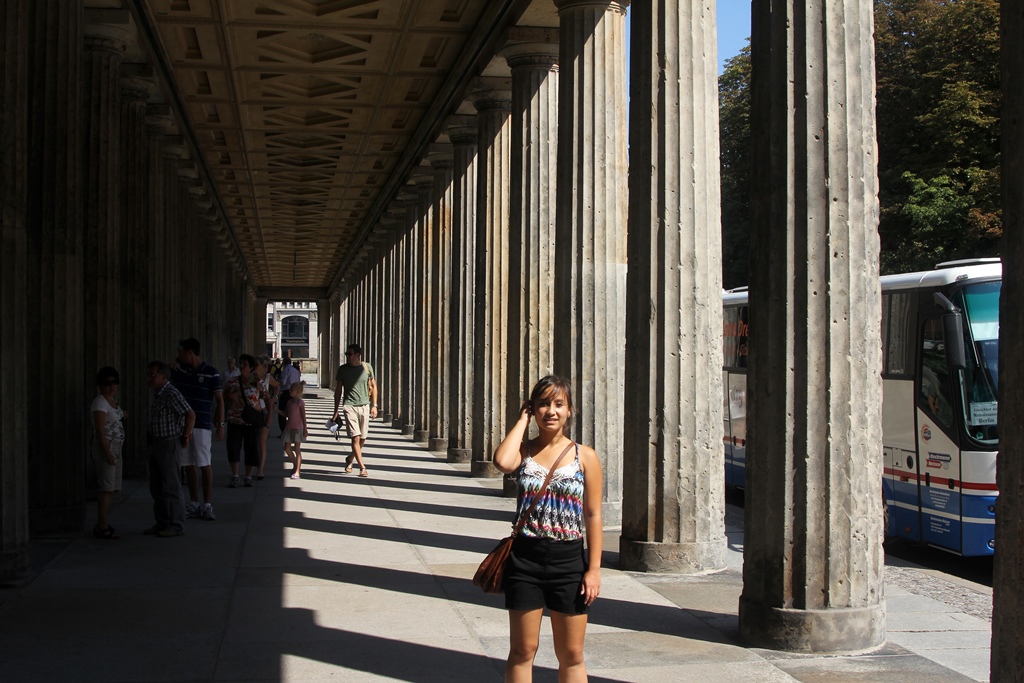
Connie and Colonnade
We took the train to Potsdamer Platz, where we found an American-style shopping
mall a block to the south of the Platz. They sold food in the mall, and we
stopped at an Asian place and had lunch.
Connie and Boba
We got back on the train and then back off at a station near the KaDeWe
department store. We’d earlier seen a market between KaDeWe and our hotel,
and we wanted to stop and pick up some groceries.
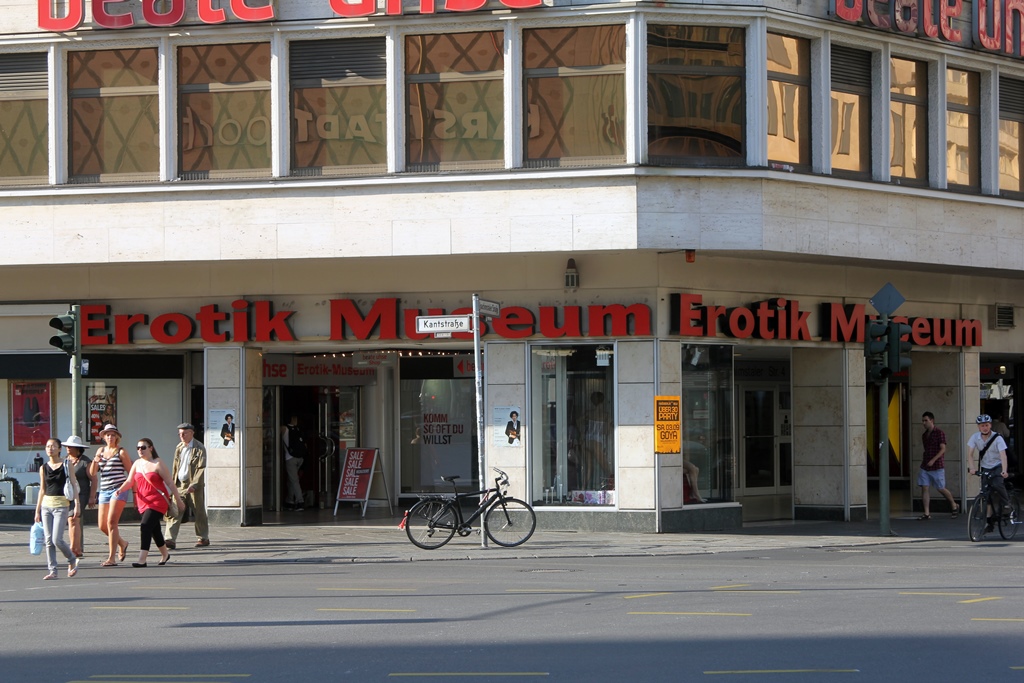
Local Landmark

Candy
We continued back to the hotel and rested for awhile, eventually emerging
to have dinner at an Indian restaurant just up the street.
German Indian Food
We had big plans for the following day, plans that included a trip
to the Berlin suburb of Potsdam.




